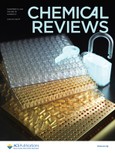
B. Singh, M. B. Gawande, A. D. Kute, R. S. Varma, P. Fornasiero, P. McNeice, R. V. Jagadeesh, M. Beller and R. Zbořil, "Single-Atom (Iron-Based) Catalysts: Synthesis and Applications," CHEMICAL REVIEWS, vol. 121, iss. 21, pp. 13620-13697, 2021.
DOI: 10.1021/acs.chemrev.1c00158, IF = 60.622
Abstract: Supported single-metal atom catalysts (SACs) are constituted of isolated active metal centers, which are heterogenized on inert supports such as graphene, porous carbon, and metal oxides. Their thermal stability, electronic properties, and catalytic activities can be controlled via interactions between the single-metal atom center and neighboring heteroatoms such as nitrogen, oxygen, and sulfur. Due to the atomic dispersion of the active catalytic centers, the amount of metal required for catalysis can be decreased, thus offering new possibilities to control the selectivity of a given transformation as well as to improve catalyst turnover frequencies and turnover numbers. This review aims to comprehensively summarize the synthesis of Fe-SACs with a focus on anchoring single atoms (SA) on carbon/graphene supports. The characterization of these advanced materials using various spectroscopic techniques and their applications in diverse research areas are described. When applicable, mechanistic investigations conducted to understand the specific behavior of Fe-SACs-based catalysts are highlighted, including the use of theoretical models.
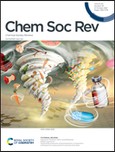
R. K. Sharma, S. Yadav, S. Dutta, H. B. Kale, I. R. Warkad, R. Zbořil, R. S. Varma and M. B. Gawande, "Silver nanomaterials: synthesis and (electro/photo) catalytic applications," CHEMICAL SOCIETY REVIEWS, vol. 50, iss. 20, pp. 11293-11380, 2021.
DOI: 10.1039/d0cs00912a, IF = 54.564
Abstract: In view of their unique characteristics and properties, silver nanomaterials (Ag NMs) have been used not only in the field of nanomedicine but also for diverse advanced catalytic technologies. In this comprehensive review, light is shed on general synthetic approaches encompassing chemical reduction, sonochemical, microwave, and thermal treatment among the preparative methods for the syntheses of Ag-based NMs and their catalytic applications. Additionally, some of the latest innovative approaches such as continuous flow integrated with MW and other benign approaches have been emphasized that ultimately pave the way for sustainability. Moreover, the potential applications of emerging Ag NMs, including sub nanomaterials and single atoms, in the field of liquid-phase catalysis, photocatalysis, and electrocatalysis as well as a positive role of Ag NMs in catalytic reactions are meticulously summarized. The scientific interest in the synthesis and applications of Ag NMs lies in the integrated benefits of their catalytic activity, selectivity, stability, and recovery. Therefore, the rise and journey of Ag NM-based catalysts will inspire a new generation of chemists to tailor and design robust catalysts that can effectively tackle major environmental challenges and help to replace noble metals in advanced catalytic applications. This overview concludes by providing future perspectives on the research into Ag NMs in the arena of electrocatalysis and photocatalysis.
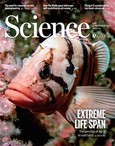
B. Mallada, A. Gallardo, M. Lamanec, B. de la Torre, V. Špirko, P. Hobza and P. Jelinek, "Real-space imaging of anisotropic charge of σ-hole by means of Kelvin probe force microscopy," SCIENCE, vol. 374, iss. 6569, pp. 863-867, 2021.
DOI: 10.1126/science.abk1479, IF = 47.728
Abstract: An anisotropic charge distribution on individual atoms, such as σ-holes, may strongly affect the material and structural properties of systems. However, the spatial resolution of such anisotropic charge distributions on an atom represents a long-standing experimental challenge. In particular, the existence of the σ-hole on halogen atoms has been demonstrated only indirectly through the determination of the crystal structures of organic molecules containing halogens or with theoretical calculations, consequently calling for its direct experimental visualization. We show that Kelvin probe force microscopy with a properly functionalized probe can image the anisotropic charge of the σ-hole and the quadrupolar charge of a carbon monoxide molecule. This opens a new way to characterize biological and chemical systems in which anisotropic atomic charges play a decisive role.
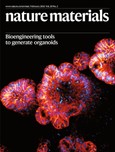
G. W. Sievers, A. W. Jensen, J. Quinson, A. Zana, F. Bizzotto, M. Oezaslan, A. Dworzak, J. J. K. Kirkensgaard, T. E. L. Smitshuysen, S. Kadkhodazadeh, M. Juelsholt, K. M. Ø. Jensen, K. Anklam, H. Wan, J. Schäfer, K. Čépe, M. Escudero-Escribano, J. Rossmeisl, A. Quade, V. Brüser and M. Arenz, "Self-supported Pt–CoO networks combining high specific activity with high surface area for oxygen reduction," NATURE MATERIALS, vol. 20, iss. 2, pp. 208-213, 2021.
DOI: 10.1038/s41563-020-0775-8, IF = 43.841
Abstract: Several concepts for platinum-based catalysts for the oxygen reduction reaction (ORR) are presented that exceed the US Department of Energy targets for Pt-related ORR mass activity. Most concepts achieve their high ORR activity by increasing the Pt specific activity at the expense of a lower electrochemically active surface area (ECSA). In the potential region controlled by kinetics, such a lower ECSA is counterbalanced by the high specific activity. At higher overpotentials, however, which are often applied in real systems, a low ECSA leads to limitations in the reaction rate not by kinetics, but by mass transport. Here we report on self-supported platinum–cobalt oxide networks that combine a high specific activity with a high ECSA. The high ECSA is achieved by a platinum–cobalt oxide bone nanostructure that exhibits unprecedentedly high mass activity for self-supported ORR catalysts. This concept promises a stable fuel-cell operation at high temperature, high current density and low humidification.

K. Jayaramulu, M. Horn, A. Schneemann, H. Saini, A. Bakandritsos, V. Ranc, M. Petr, V. Stavila, C. Narayana, B. Scheibe, Š. Kment, M. Otyepka, N. Motta, D. Dubal, R. Zbořil and R. A. Fischer, "Covalent Graphene‐MOF Hybrids for High‐Performance Asymmetric Supercapacitors," ADVANCED MATERIALS, vol. 33, iss. 4, pp. 2004560, 2021.
DOI: 10.1002/adma.202004560, IF = 30.849
Abstract: In this work, the covalent attachment of an amine functionalized metal‐organic framework (UiO‐66‐NH2 = Zr6O4(OH)4(bdc‐NH2)6; bdc‐NH2 = 2‐amino‐1,4‐benzenedicarboxylate) (UiO‐Universitetet i Oslo) to the basal‐plane of carboxylate functionalized graphene (graphene acid = GA) via amide bonds is reported. The resultant GA@UiO‐66‐NH2 hybrid displayed a large specific surface area, hierarchical pores and an interconnected conductive network. The electrochemical characterizations demonstrated that the hybrid GA@UiO‐66‐NH2 acts as an effective charge storing material with a capacitance of up to 651 F g−1, significantly higher than traditional graphene‐based materials. The results suggest that the amide linkage plays a key role in the formation of a π‐conjugated structure, which facilitates charge transfer and consequently offers good capacitance and cycling stability. Furthermore, to realize the practical feasibility, an asymmetric supercapacitor using a GA@UiO‐66‐NH2 positive electrode with Ti3C2TX MXene as the opposing electrode has been constructed. The cell is able to deliver a power density of up to 16 kW kg−1 and an energy density of up to 73 Wh kg−1, which are comparable to several commercial devices such as Pb‐acid and Ni/MH batteries. Under an intermediate level of loading, the device retained 88% of its initial capacitance after 10 000 cycles.
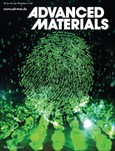
H. González‐Herrero, J. I. Mendieta‐Moreno, S. Edalatmanesh, J. Santos, N. Martín, D. Écija, B. Torre and P. Jelinek, "Atomic Scale Control and Visualization of Topological Quantum Phase Transition in π‐Conjugated Polymers Driven by Their Length," ADVANCED MATERIALS, vol. 33, iss. 44, pp. 2104495, 2021.
DOI: 10.1002/adma.202104495, IF = 30.849
Abstract: Quantum phase transitions (QPTs) driven by quantum fluctuations are transitions between distinct quantum phases of matter. At present, they are poorly understood and not readily controlled. Here, scanning tunneling microscopy (STM) and noncontact atomic force microscopy (nc-AFM) are used to explore atomic scale control over quantum phase transitions between two different topological quantum states of a well-defined π-conjugated polymer. The phase transition is driven by a pseudo Jahn–Teller effect that is activated above a certain polymer chain length. In addition, theoretical calculations indicate the presence of long-lasting coherent fluctuations between the polymer's two quantum phases near the phase transition, at finite temperature. This work thus presents a new way of exploring atomic-scale control over QPTs and indicates that emerging quantum criticality in the vicinity of a QPT can give rise to new states of organic matter.
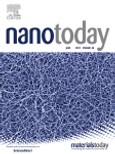
M. Delfi, R. Sartorius, M. Ashrafizadeh, E. Sharifi, Y. Zhang, P. De Berardinis, A. Zarrabi, R. S. Varma, F. R. Tay, B. R. Smith and P. Makvandi, "Self-assembled peptide and protein nanostructures for anti-cancer therapy: Targeted delivery, stimuli-responsive devices and immunotherapy," NANO TODAY, vol. 38, art. no. 101119, 2021.
DOI: 10.1016/j.nantod.2021.101119, IF = 20.722
Abstract: Self-assembled peptides and proteins possess tremendous potential as targeted drug delivery systems and key applications of these well-defined nanostructures reside in anti-cancer therapy. Peptides and proteins can self-assemble into nanostructures of diverse sizes and shapes in response to changing environmental conditions such as pH, temperature, ionic strength, as well as host and guest molecular interactions; their countless benefits include good biocompatibility and high loading capacity for hydrophobic and hydrophilic drugs. These self-assembled nanomaterials can be adorned with functional moieties to specifically target tumor cells. Stimuli-responsive features can also be incorporated with respect to the tumor microenvironment. This review sheds light on the growing interest in self-assembled peptides and proteins and their burgeoning applications in cancer treatment and immunotherapy.
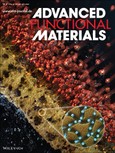
V. M. Santhini, O. Stetsovych, M. Ondráček, J. I. Mendieta Moreno, P. Mutombo, B. Torre, M. Švec, J. Klívar, I. G. Stará, H. Vázquez, I. Starý and P. Jelínek, "On‐Surface Synthesis of Polyferrocenylene and its Single‐Chain Conformational and Electrical Transport Properties," ADVANCED FUNCTIONAL MATERIALS, vol. 31, iss. 5, pp. 2006391, 2021.
DOI: 10.1002/adfm.202006391, IF = 18.808
Abstract: Unlike intrinsically conductive organic polymers, which are central to organic electronics/photovoltaics, metallopolymers contain multiple redox-active centers allowing extra control of their intriguing properties. Ferrocene polymers are particularly attractive in this regard, but research of the iconic poly(1,1′-ferrocenylene), a main-chain ferrocene polymer with the most densely bound redox-active iron centers, has practically stopped because it is an insoluble and rather inhomogeneous material. Herein, its synthesis on the Ag(111) surface is reported, based on the Ullmann coupling of 1′,1″′-diiodo-1,1″-biferrocene. Conformationally flexible single-chain nanowires up to 50 nm in length, thus overcoming the limits of conventional solution polymerization, are characterized by scanning probe microscopy techniques achieving atomic resolution. Single-chain electrical conductivity measurements are performed in the longitudinal directions revealing apparent metal-to-semiconductor transition (depending on the number of ferrocene units lifted from the surface). A simple transport model is established to rationalize this observation.
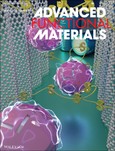
X. Zhou, I. Hwang, O. Tomanec, D. Fehn, A. Mazare, R. Zboril, K. Meyer and P. Schmuki, "Advanced Photocatalysts: Pinning Single Atom Co‐Catalysts on Titania Nanotubes," ADVANCED FUNCTIONAL MATERIALS, vol. 31, iss. 30, pp. 2102843, 2021.
DOI: 10.1002/adfm.202102843, IF = 18.808
Abstract: Single atom (SA) catalysis, over the last 10 years, has become a forefront in heterogeneous catalysis, electrocatalysis, and most recently also in photocatalysis. Most crucial when engineering a SA catalyst/support system is the creation of defined anchoring points on the support surface to stabilize reactive SA sites. Here, a so far unexplored but evidently very effective approach to trap and stabilize SAs on a broadly used photocatalyst platform is introduced. In self-organized anodic TiO2 nanotubes, a high degree of stress is incorporated in the amorphous oxide during nanotube growth. During crystallization (by thermal annealing), this leads to a high density of Ti3+-Ov surface defects that are hardly present in other common titania nanostructures (as nanoparticles). These defects are highly effective for SA iridium trapping. Thus a SA-Ir photocatalyst with a higher photocatalytic activity than for any classic co-catalyst arrangement on the semiconductive substrate is obtained. Hence, a tool for SA trapping on titania-based back-contacted platforms is provided for wide application in electrochemistry and photoelectrochemistry. Moreover, it is shown that stably trapped SAs provide virtually all photocatalytic reactivity, with turnover frequencies in the order of 4 × 106 h−1 in spite of representing only a small fraction of the initially loaded SAs.

I. Tantis, A. Bakandritsos, D. Zaoralová, M. Medveď, P. Jakubec, J. Havláková, R. Zbořil and M. Otyepka, "Covalently Interlinked Graphene Sheets with Sulfur‐Chains Enable Superior Lithium–Sulfur Battery Cathodes at Full‐Mass Level," ADVANCED FUNCTIONAL MATERIALS, vol. 31, iss. 30, pp. 2101326, 2021.
DOI: 10.1002/adfm.202101326, IF = 18.808
Abstract: Sulfur represents a low‑cost, sustainable, and high theoretical capacity cathode material for lithium–sulfur batteries, which can meet the growing demand in portable power sources, such as in electric vehicles and mobile information technologies. However, the shuttling effect of the formed lithium polysulfides, as well as their low conductivity, compromise the electrochemical performance of lithium–sulfur cells. To tackle this challenge, a so far unexplored cathode, composed of sulfur covalently bonded directly on graphene is developed. This is achieved by leveraging the nucleophilicity of polysulfide chains, which react readily with the electrophilic centers in fluorographene, as experimental and theoretical data unveil. The reaction leads to the formation of carbon–sulfur covalent bonds and a particularly high sulfur content of 80 mass%. Owing to these features, the developed cathode exhibits excellent performance with only 5 mass% of conductive carbon additive, delivering very high full‑cathode‑mass capacities and rate capability, combined with superior cycling stability. In combination with a fluorinated ether as electrolyte additive, the capacity persists at ≈700 mAh g−1 after 100 cycles at 0.1 C, and at ≈644 mAh g−1 after 250 cycles at 0.2 C, keeping ≈470 mAh g−1 even after 500 cycles.
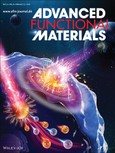
H. L. Chia, C. C. Mayorga‐Martinez, Z. Sofer, P. Lazar, R. D. Webster and M. Pumera, "Vanadium Dopants: A Boon or a Bane for Molybdenum Dichalcogenides‐Based Electrocatalysis Applications," ADVANCED FUNCTIONAL MATERIALS, vol. 31, iss. 8, pp. 2009083, 2021.
DOI: 10.1002/adfm.202009083, IF = 18.808
Abstract: The ever-rising concerns with regards to energy shortages and climate change have made the search for clean and renewable energy sources a pressing priority for the sustainable development of societies. Although, conventional precious metal-based catalysts such as platinum, iridium, and ruthenium are able to efficiently catalyze the conversion of chemical to electrical energy, they are often very costly, scarce, and suffer from poor stability, hence impeding their widespread applications. The limitations of the current state-of art catalysts have propelled tremendous efforts in search for alternative catalysts. Notably, transition metal dichalcogenides (TMDs) have spurred much enthusiasm because of their natural abundance, low cost, and remarkable catalytic activity. Numerous studies have recounted that doping can tune the properties of TMDs and that vanadium dopants reportedly improve the electrical properties of Group 6 TMDs. Herein, the authors aspire to investigate the effects of doping varying amounts of vanadium on molybdenum dichalcogenides on their electrocatalytic activities toward hydrogen evolution reaction, oxygen evolution reaction, and oxygen reduction reaction. Despite previous studies bespeaking promising effects, the results here demonstrate both improvements and worsening of electrocatalytic performances from varying the stoichiometry of vanadium dopants in molybdenum dichalcogenides, depending on the type of materials and intended electrochemical applications.
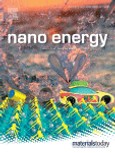
L. Mascaretti, A. Schirato, R. Zbořil, Š. Kment, P. Schmuki, A. Alabastri and A. Naldoni, "Solar steam generation on scalable ultrathin thermoplasmonic TiN nanocavity arrays," NANO ENERGY, vol. 83, art. no. 105828, 2021.
DOI: 10.1016/j.nanoen.2021.105828, IF = 17.881
Abstract: Plasmonic-based solar absorbers exhibit complete light absorption in a sub-µm thickness, representing an alternative to mm-thick carbon-based materials most typically employed for solar-driven steam generation. In this work, we present the scalable fabrication of ultrathin plasmonic titanium nitride (TiN) nanocavity arrays that exhibit 90% broadband solar light absorption within ~ 250 nm from the illuminated surface and show a fast non-linear increase of performance with light intensity. At 14 Suns TiN nanocavities reach ~ 15 kg h–1 m–2 evaporation rate and ~ 76% thermal efficiency, a steep increase from ~ 0.4 kg h−1 m−2 and ~ 20% under 1.4 Suns. Electromagnetic, thermal and diffusion modeling of our system reveals the contribution of each material and reactor component to heat dissipation and shows that a quasi-two-dimensional heat dissipation regime significantly accelerates water evaporation. Our approach to ultrathin plasmonic absorbers can boost the performance of devices for evaporation/desalination and holds promise for a broader range of phase separation processes.
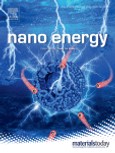
A. B. Tesler, T. Sannomiya, S. Hejazi, R. Mohammadi, N. Vogel, M. Altomare and P. Schmuki, "Metallic nanoparticle-on-mirror: Multiple-band light harvesting and efficient photocurrent generation under visible light irradiation," NANO ENERGY, vol. 90, pp. 106609, 2021.
DOI: 10.1016/j.nanoen.2021.106609, IF = 17.881
Abstract: We present a photoanode concept for photoelectrochemical (PEC) water splitting based on metal nanoparticles (Au, Ag, Cu) deposited on a Ti mirror (NPoM) to photosensitize an intermediate TiO2 layer to induce the harvesting of light with sub-bandgap photon energies. The generation of hot electron-hole pairs in metallic nanostructures can occur either by intraband excitation, i.e., plasmon electrons, or by the interband transition of the d-band electrons to the unoccupied conduction band states. Our results demonstrate that the underlying Ti mirror significantly amplifies the PEC activity of such NPoM systems in the visible spectral range. We show that the PEC enhancement in the visible spectral range is not limited to the intraband excitations but is affected mainly by the light trapping pathway within the TiO2 layer, i.e. due to a favorable interplay between thin-film interference cavity modes with both intraband and interband excitations. Among tested metals, Cu and Ag NPs demonstrate a ~3-fold higher enhancement factor than that of Au NPs, while in both former cases the nature of the excited electrons is different. The experimentally determined internal quantum efficiency demonstrates alternating behavior with wavelength showing higher efficiencies at short wavelengths, which is attributed to the reduced Schottky barrier of the NPoMs at constructive interference maxima.
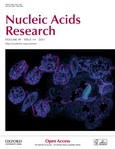
J. Chen, M. Cheng, G. Salgado, P. Stadlbauer, X. Zhang, S. Amrane, A. Guédin, F. He, J. Šponer, H. Ju, J. Mergny and J. Zhou, "The beginning and the end: flanking nucleotides induce a parallel G-quadruplex topology," NUCLEIC ACIDS RESEARCH, vol. 49, iss. 16, pp. 9548–9559, 2021.
DOI: 10.1093/nar/gkab681, IF = 16.971
Abstract: Genomic sequences susceptible to form G-quadruplexes (G4s) are always flanked by other nucleotides, but G4 formation in vitro is generally studied with short synthetic DNA or RNA oligonucleotides, for which bases adjacent to the G4 core are often omitted. Herein, we systematically studied the effects of flanking nucleotides on structural polymorphism of 371 different oligodeoxynucleotides that adopt intramolecular G4 structures. We found out that the addition of nucleotides favors the formation of a parallel fold, defined as the ‘flanking effect’ in this work. This ‘flanking effect’ was more pronounced when nucleotides were added at the 5′-end, and depended on loop arrangement. NMR experiments and molecular dynamics simulations revealed that flanking sequences at the 5′-end abolish a strong syn-specific hydrogen bond commonly found in non-parallel conformations, thus favoring a parallel topology. These analyses pave a new way for more accurate prediction of DNA G4 folding in a physiological context.
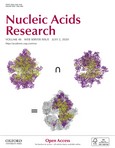
T. Raček, O. Schindler, D. Toušek, V. Horský, K. Berka, J. Koča and R. Svobodová, "Atomic Charge Calculator II: web-based tool for the calculation of partial atomic charges," NUCLEIC ACIDS RESEARCH, vol. 48, iss. W1, pp. W591-W596, 2020.
DOI: 10.1093/nar/gkaa367, IF = 16.971
Abstract: Partial atomic charges serve as a simple model for the electrostatic distribution of a molecule that drives its interactions with its surroundings. Since partial atomic charges are frequently used in computational chemistry, chemoinformatics and bioinformatics, many computational approaches for calculating them have been introduced. The most applicable are fast and reasonably accurate empirical charge calculation approaches. Here, we introduce Atomic Charge Calculator II (ACC II), a web application that enables the calculation of partial atomic charges via all the main empirical approaches and for all types of molecules. ACC II implements 17 empirical charge calculation methods, including the highly cited (QEq, EEM), the recently published (EQeq, EQeq+C), and the old but still often used (PEOE). ACC II enables the fast calculation of charges even for large macromolecular structures. The web server also offers charge visualization, courtesy of the powerful LiteMol viewer. The calculation setup of ACC II is very straightforward and enables the quick calculation of high-quality partial charges. The application is available at https://acc2.ncbr.muni.cz.
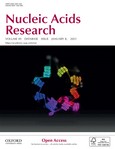
I. Sillitoe, N. Bordin, N. Dawson, V. P. Waman, P. Ashford, H. M. Scholes, C. S. M. Pang, L. Woodridge, C. Rauer, N. Sen, M. Abbasian, S. Le Cornu, S. D. Lam, K. Berka, I. Varekova, R. Svobodova, J. Lees and C. A. Orengo, "CATH: increased structural coverage of functional space," NUCLEIC ACIDS RESEARCH, vol. 49, iss. D1, pp. D266-D273, 2021.
DOI: 10.1093/nar/gkaa1079, IF = 16.971
Abstract: CATH (https://www.cathdb.info) identifies domains in protein structures from wwPDB and classifies these into evolutionary superfamilies, thereby providing structural and functional annotations. There are two levels: CATH-B, a daily snapshot of the latest domain structures and superfamily assignments, and CATH+, with additional derived data, such as predicted sequence domains, and functionally coherent sequence subsets (Functional Families or FunFams). The latest CATH+ release, version 4.3, significantly increases coverage of structural and sequence data, with an addition of 65,351 fully-classified domains structures (+15%), providing 500 238 structural domains, and 151 million predicted sequence domains (+59%) assigned to 5481 superfamilies. The FunFam generation pipeline has been re-engineered to cope with the increased influx of data. Three times more sequences are captured in FunFams, with a concomitant increase in functional purity, information content and structural coverage. FunFam expansion increases the structural annotations provided for experimental GO terms (+59%). We also present CATH-FunVar web-pages displaying variations in protein sequences and their proximity to known or predicted functional sites. We present two case studies (1) putative cancer drivers and (2) SARS-CoV-2 proteins. Finally, we have improved links to and from CATH including SCOP, InterPro, Aquaria and 2DProt.
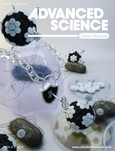
D. Panáček, L. Hochvaldová, A. Bakandritsos, T. Malina, M. Langer, J. Belza, J. Martincová, R. Večeřová, P. Lazar, K. Poláková, J. Kolařík, L. Válková, M. Kolář, M. Otyepka, A. Panáček and R. Zbořil, "Silver Covalently Bound to Cyanographene Overcomes Bacterial Resistance to Silver Nanoparticles and Antibiotics," ADVANCED SCIENCE, vol. 8, iss. 12, pp. 2003090, 2021.
DOI: 10.1002/advs.202003090, IF = 16.806
Abstract: The ability of bacteria to develop resistance to antibiotics is threatening one of the pillars of modern medicine. It was recently understood that bacteria can develop resistance even to silver nanoparticles by starting to produce flagellin, a protein which induces their aggregation and deactivation. This study shows that silver covalently bound to cyanographene (GCN/Ag) kills silver-nanoparticle-resistant bacteria at concentrations 30 times lower than silver nanoparticles, a challenge which has been so far unmet. Tested also against multidrug resistant strains, the antibacterial activity of GCN/Ag is systematically found as potent as that of free ionic silver or 10 nm colloidal silver nanoparticles. Owing to the strong and multiple dative bonds between the nitrile groups of cyanographene and silver, as theory and experiments confirm, there is marginal silver ion leaching, even after six months of storage, and thus very high cytocompatibility to human cells. Molecular dynamics simulations suggest strong interaction of GCN/Ag with the bacterial membrane, and as corroborated by experiments, the antibacterial activity does not rely on the release of silver nanoparticles or ions. Endowed with these properties, GCN/Ag shows that rigid supports selectively and densely functionalized with potent silver-binding ligands, such as cyanographene, may open new avenues against microbial resistance.
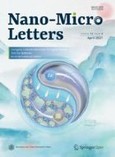
S. Iravani and R. S. Varma, "Plant Pollen Grains: A Move Towards Green Drug and Vaccine Delivery Systems," NANO-MICRO LETTERS, vol. 13, article no. 128, 2021.
DOI: 10.1007/s40820-021-00654-y, IF = 16.419
Abstract: Pollen grains and plant spores have emerged as innovative biomaterials for various applications such as drug/vaccine delivery, catalyst support, and the removal of heavy metals. The natural microcapsules comprising spore shells and pollen grain are designed for protecting the genetic materials of plants from exterior impairments. Two layers make up the shell, the outer layer (exine) that comprised largely of sporopollenin, and the inner layer (intine) that built chiefly of cellulose. These microcapsule shells, namely hollow sporopollenin exine capsules have some salient features such as homogeneity in size, non-toxic nature, resilience to both alkalis and acids, and the potential to withstand at elevated temperatures; they have displayed promising potential for the microencapsulation and the controlled drug delivery/release. The important attribute of mucoadhesion to intestinal tissues can prolong the interaction of sporopollenin with the intestinal mucosa directing to an augmented effectiveness of nutraceutical or drug delivery. Here, current trends and prospects related to the application of plant pollen grains for the delivery of vaccines and drugs and vaccine are discussed.
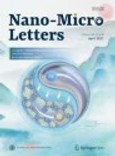
T. Qin, Z. Wang, Y. Wang, F. Besenbacher, M. Otyepka and M. Dong, "Recent Progress in Emerging Two-Dimensional Transition Metal Carbides," NANO-MICRO LETTERS, vol. 13, art. no. 183, 2021.
DOI: 10.1007/s40820-021-00710-7, IF = 16.419
Abstract: As a new member in two-dimensional materials family, transition metal carbides (TMCs) have many excellent properties, such as chemical stability, in-plane anisotropy, high conductivity and flexibility, and remarkable energy conversation efficiency, which predispose them for promising applications as transparent electrode, flexible electronics, broadband photodetectors and battery electrodes. However, up to now, their device applications are in the early stage, especially because their controllable synthesis is still a great challenge. This review systematically summarized the state-of-the-art research in this rapidly developing field with particular focus on structure, property, synthesis and applicability of TMCs. Finally, the current challenges and future perspectives are outlined for the application of 2D TMCs.
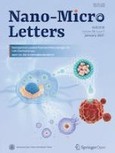
M. Rahimnejad, N. Nasrollahi Boroujeni, S. Jahangiri, N. Rabiee, M. Rabiee, P. Makvandi, O. Akhavan and R. S. Varma, "Prevascularized Micro-/Nano-Sized Spheroid/Bead Aggregates for Vascular Tissue Engineering," NANO-MICRO LETTERS, vol. 13, article no. 182, 2021.
DOI: 10.1007/s40820-021-00697-1, IF = 16.419
Abstract: Efficient strategies to promote microvascularization in vascular tissue engineering, a central priority in regenerative medicine, are still scarce; nano- and micro-sized aggregates and spheres or beads harboring primitive microvascular beds are promising methods in vascular tissue engineering. Capillaries are the smallest type and in numerous blood vessels, which are distributed densely in cardiovascular system. To mimic this microvascular network, specific cell components and proangiogenic factors are required. Herein, advanced biofabrication methods in microvascular engineering, including extrusion-based and droplet-based bioprinting, Kenzan, and biogripper approaches, are deliberated with emphasis on the newest works in prevascular nano- and micro-sized aggregates and microspheres/microbeads.
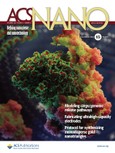
H. Saini, N. Srinivasan, V. Šedajová, M. Majumder, D. P. Dubal, M. Otyepka, R. Zbořil, N. Kurra, R. A. Fischer and K. Jayaramulu, "Emerging MXene@Metal–Organic Framework Hybrids: Design Strategies toward Versatile Applications," ACS NANO, vol. 15, iss. 12, pp. 18742-18776, 2021.
DOI: 10.1021/acsnano.1c06402, IF = 15.881
Abstract: Rapid progress on developing smart materials and design of hybrids is motivated by pressing challenges associated with energy crisis and environmental remediation. While emergence of versatile classes of nanomaterials has been fascinating, the real excitement lies in the design of hybrid materials with tunable properties. Metal–organic frameworks (MOFs) are the key materials for gas sorption and electrochemical applications, but their sustainability is challenged by limited chemical stability, poor electrical conductivity, and intricate, inaccessible pores. Despite tremendous efforts towards improving the stability of MOF materials, little progress has made researchers inclined toward developing hybrid materials. MXenes, a family of two-dimensional transition-metal carbides, nitrides and carbonitrides, are known for their compositional versatility and formation of a range of structures with rich surface chemistry. Hybridization of MOFs with functional layered MXene materials may be beneficial if the host structure provides appropriate interactions for stabilizing and improving the desired properties. Recent efforts have focused on integrating Ti3C2Tx and V2CTx MXenes with MOFs to result in hybrid materials with augmented electrochemical and physicochemical properties, widening the scope for emerging applications. This review discusses the potential design strategies of MXene@MOF hybrids, attributes of tunable properties in the resulting hybrids, and their applications in water treatment, sensing, electrochemical energy storage, smart textiles, and electrocatalysis. Comprehensive discussions on the recent efforts on rapidly evolving MXene@MOF materials for various applications and potential future directions are highlighted.
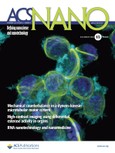
M. Majumder, H. Saini, I. Dědek, A. Schneemann, N. R. Chodankar, V. Ramarao, M. S. Santosh, A. K. Nanjundan, Š. Kment, D. Dubal, M. Otyepka, R. Zbořil and K. Jayaramulu, "Rational Design of Graphene Derivatives for Electrochemical Reduction of Nitrogen to Ammonia," ACS NANO, vol. 15, iss. 11, pp. 17275-17298, 2021.
DOI: 10.1021/acsnano.1c08455, IF = 15.881
Abstract: The conversion of nitrogen to ammonia offers a sustainable and environmentally friendly approach for producing precursors for fertilizers and efficient energy carriers. Owing to the large energy density and significant gravimetric hydrogen content, NH3 is considered an apt next-generation energy carrier and liquid fuel. However, the low conversion efficiency and slow production of ammonia through the nitrogen reduction reaction (NRR) are currently bottlenecks, making it an unviable alternative to the traditional Haber–Bosch process for ammonia production. The rational design and engineering of catalysts (both photo- and electro-) represent a crucial challenge for improving the efficiency and exploiting the full capability of the NRR. In the present review, we highlight recent progress in the development of graphene-based systems and graphene derivatives as catalysts for the NRR. Initially, the history, fundamental mechanism, and importance of the NRR to produce ammonia are briefly discussed. We also outline how surface functionalization, defects, and hybrid structures (single-atom/multiatom as well as composites) affect the N2 conversion efficiency. The potential of graphene and graphene derivatives as NRR catalysts is highlighted using pertinent examples from theoretical simulations as well as machine learning based performance predictive methods. The review is concluded by identifying the crucial advantages, drawbacks, and challenges associated with principal scientific and technological breakthroughs in ambient catalytic NRR.

S. Ng, J. Sturala, J. Vyskocil, P. Lazar, J. Martincova, J. Plutnar and M. Pumera, "Two-Dimensional Functionalized Germananes as Photoelectrocatalysts," ACS NANO, vol. 15, iss. 7, pp. 11681-11693, 2021.
DOI: 10.1021/acsnano.1c02327, IF = 15.881
Abstract: Succeeding graphene, monoelemental two-dimensional (2D) materials such as germanene and silicene, coined as “Xenes”, have attracted vast scientific and technological interests. Adding covalently bonded hydrogen on both sides of germanene leads to germanane (i.e., hydrogen-terminated germanene, GeH). Further, the covalent functionalization of germanane allows the tuning of its physical and chemical properties. Diverse variants of germananes have been synthesized, but current research is primarily focused on their fundamental properties. As a case in point, their applications as photo- and electrocatalysts in the field of modern energy conversion have not been explored. Here, we prepare 2D germanene-based materials, specifically germanane and germananes functionalized by various alkyl chains with different terminal groups—germanane with methyl, propyl, hydroxypropyl, and 2-(methoxycarbonyl)ethyl—and investigate their structural, morphological, optical, electronic, and electrochemical properties. The bond geometries of the functionalized structures, their formation energies, and band gap values are investigated by density functional theory calculations. The functionalized germananes are tested as photoelectrocatalysts in the hydrogen evolution reaction (HER) and photo-oxidation of water. The performance of the germananes is influenced by the functionalized groups, where the germanane with −CH2CH2CH2OH termination records the lowest HER overpotentials and with −H termination reaches the highest photocurrent densities for water oxidation over the entire visible spectral region. These positive findings serve as an overview of organic functionalization of 2D germananes that can be expanded to other “Xanes” for targeted tuning of the optical and electronic properties for photo- and electrochemical energy conversion applications.
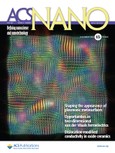
A. Cahlík, J. Hellerstedt, J. I. Mendieta-Moreno, M. Švec, V. M. Santhini, S. Pascal, D. Soler-Polo, S. I. Erlingsson, K. Výborný, P. Mutombo, O. Marsalek, O. Siri and P. Jelínek, "Significance Of Nuclear Quantum Effects In Hydrogen Bonded Molecular Chains," ACS NANO, vol. 15, iss. 6, pp. 10357-10365, 2021.
DOI: 10.1021/acsnano.1c02572, IF = 15.881
Abstract: In hydrogen-bonded systems, nuclear quantum effects such as zero-point motion and tunneling can significantly affect their material properties through underlying physical and chemical processes. Presently, direct observation of the influence of nuclear quantum effects on the strength of hydrogen bonds with resulting structural and electronic implications remains elusive, leaving opportunities for deeper understanding to harness their fascinating properties. We studied hydrogen-bonded one-dimensional quinonediimine molecular networks which may adopt two isomeric electronic configurations via proton transfer. Herein, we demonstrate that concerted proton transfer promotes a delocalization of π-electrons along the molecular chain, which enhances the cohesive energy between molecular units, increasing the mechanical stability of the chain and giving rise to distinctive electronic in-gap states localized at the ends. These findings demonstrate the identification of a class of isomeric hydrogen-bonded molecular systems where nuclear quantum effects play a dominant role in establishing their chemical and physical properties. This identification is a step toward the control of mechanical and electronic properties of low-dimensional molecular materials via concerted proton tunneling.
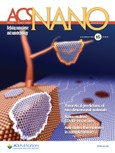
J. Doležal, S. Canola, P. Merino and M. Švec, "Exciton-Trion Conversion Dynamics in a Single Molecule," ACS NANO, vol. 15, iss. 4, pp. 7694-7699, 2021.
DOI: 10.1021/acsnano.1c01318, IF = 15.881
Abstract: Charged optical excitations (trions) generated by charge carrier injection are crucial for emerging optoelectronic technologies as they can be produced and manipulated by electric fields. Trions and neutral excitons can be efficiently induced in single molecules by means of tip-enhanced spectromicroscopic techniques. However, little is known of the exciton-trion dynamics at single molecule level as this requires methods permitting simultaneous subnanometer and subnanosecond characterization. Here, we investigate exciton-trion dynamics by phase fluorometry, combining radio frequency modulated scanning tunnelling luminescence with time-resolved single photon detection. We generate excitons and trions in single Zinc Phthalocyanine (ZnPc) molecules on NaCl/Ag(111), and trace the evolution of the system in the picosecond range. We explore the dependence of effective lifetimes on bias voltage and describe the conversion mechanism from neutral excitons to trions, via charge capture, as the primary pathway to trion formation. We corroborate the dynamics of the system by a causally deterministic four-state model.
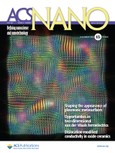
P. Mayorga-Burrezo, J. Muñoz, D. Zaoralová, M. Otyepka and M. Pumera, "Multiresponsive 2D Ti3C2Tx MXene via Implanting Molecular Properties," ACS NANO, vol. 15, iss. 6, pp. 10067-10075, 2021.
DOI: 10.1021/acsnano.1c01742, IF = 15.881
Abstract: The design and fabrication of active nanomaterials exhibiting multifunctional properties is a must in the so-called global “Fourth Industrial Revolution”. In this sense, molecular engineering is a powerful tool to implant original capabilities on a macroscopic scale. Herein, different bioinspired 2D-MXenes have been developed via a versatile and straightforward synthetic approach. As a proof of concept, Ti3C2Tx MXene has been exploited as a highly sensitive transducing platform for the covalent assembly of active biomolecular architectures (i.e., amino acids). All pivotal properties originated from the anchored targets were proved to be successfully transferred to the resulting bioinspired 2D-MXenes. Appealing applications have been devised for these 2D-MXene prototypes showing (i) chiroptical activity, (ii) fluorescence capabilities, (iii) supramolecular π–π interactions, and (iv) stimuli-responsive molecular switchability. Overall, this work demonstrates the fabrication of programmable 2D-MXenes, taking advantage of the inherent characteristics of the implanted (bio)molecular components. Thus, the current bottleneck in the field of 2D-MXenes can be overcome after the significant findings reported here.
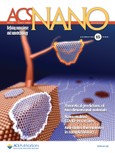
Y. Zuo, T. Li, N. Zhang, T. Jing, D. Rao, P. Schmuki, Š. Kment, R. Zbořil and Y. Chai, "Spatially Confined Formation of Single Atoms in Highly Porous Carbon Nitride Nanoreactors," ACS NANO, vol. 15, iss. 4, pp. 7790-7798, 2021.
DOI: 10.1021/acsnano.1c01872, IF = 15.881
Abstract: Reducing the size of a catalyst to a single atom (SA) level can dramatically change its physicochemical properties and significantly boost its catalytic activity. However, the massive synthesis of SA catalysts still remains a grand challenge mainly because of the aggregation and nucleation of the generated atoms during the reaction. Here, we design and implement a spatially confined synthetic strategy based on a porous-hollow carbon nitride (p-CN) coordinated with 1-butyl-3-methylimidazole hexafluorophosphate, which can act as a nanoreactor and allow us to obtain metal SA catalysts (p-CN@M SAs). This relatively easy and highly effective method provides a way to massively synthesize single/multiple atoms (p-CN@M SAs, M = Pt, Pd, Cu, Fe, etc.). Moreover, the amorphous NiB-coated p-CN@Pt SAs can further increase the loading amount of Pt SAs to 3.7 wt %. The synthesized p-CN@Pt&NiB electrocatalyst exhibits an extraordinary hydrogen evolution reaction activity with the overpotential of 40.6 mV@10 mA/cm–2 and the Tofel slope of 29.26 mV/dec.

S. Kalytchuk, L. Zdražil, Z. Bad’ura, M. Medved’, M. Langer, M. Paloncýová, G. Zoppellaro, S. V. Kershaw, A. L. Rogach, M. Otyepka and R. Zbořil, "Carbon Dots Detect Water-to-Ice Phase Transition and Act as Alcohol Sensors via Fluorescence Turn-Off/On Mechanism," ACS NANO, vol. 15, iss. 4, pp. 6582–6593, 2021.
DOI: 10.1021/acsnano.0c09781, IF = 15.881
Abstract: Highly fluorescent carbon nanoparticles called carbon dots (CDs) have been the focus of intense research due to their simple chemical synthesis, nontoxic nature, and broad application potential including optoelectronics, photocatalysis, biomedicine, and energy-related technologies. Although a detailed elucidation of the mechanism of their photoluminescence (PL) remains an unmet challenge, the CDs exhibit robust, reproducible, and environment-sensitive PL signals, enabling us to monitor selected chemical phenomena including phase transitions or detection of ultralow concentrations of molecular species in solution. Herein, we report the PL turn-off/on behavior of aqueous CDs allowing the reversible monitoring of the water–ice phase transition. The bright PL attributable to molecular fluorophores present on the CD surface was quenched by changing the liquid aqueous environment to solid phase (ice). Based on light-induced electron paramagnetic resonance (LEPR) measurements and density functional theory (DFT) calculations, the proposed kinetic model assuming the presence of charge-separated trap states rationalized the observed sensitivity of PL lifetimes to the environment. Importantly, the PL quenching induced by freezing could be suppressed by adding a small amount of alcohols. This was attributed to a high tendency of alcohol to increase its concentration at the CD/solvent interface, as revealed by all-atom molecular dynamics simulations. Based on this behavior, a fluorescence “turn-on” alcohol sensor for exhaled breath condensate (EBC) analysis has been developed. This provided an easy method to detect alcohols among other common interferents in EBC with a low detection limit (100 ppm), which has a potential to become an inexpensive and noninvasive clinically useful diagnostic tool for early stage lung cancer screening.
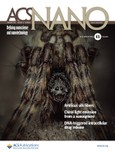
V. Urbanová, N. Antonatos, J. Plutnar, P. Lazar, J. Michalička, M. Otyepka, Z. Sofer and M. Pumera, "Rhenium Doping of Layered Transition-Metal Diselenides Triggers Enhancement of Photoelectrochemical Activity," ACS NANO, vol. 15, iss. 2, pp. 2374-2385, 2021.
DOI: 10.1021/acsnano.0c04437, IF = 15.881
Abstract: The ever decreasing sources of fossil fuels have launched extensive research of alternative materials that might play a key role in their replacement. Therefore, the scientific community continuously investigates the possibilities of maximizing the working capacity of such materials in order to fulfill energy challenges in the near future. In this context, doping of the semiconducting materials is a versatile strategy to trigger their physicochemical properties as well their electrochemical performance. Herein, the impact of rhenium doping toward photoelectrochemical activity of MoSe2 and WSe2 was studied. Our results indicate that rhenium as a dopant contributes to better overall electrochemical performance, that is, an easier electron transfer of these materials compared to pristine compounds. Additionally, the photoelectrochemical measurements revealed that the doping with rhenium generated an enhancement of the photocurrent response of MoSe2 as well as WSe2 under UV light illumination.
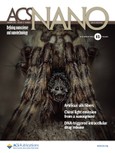
J. Kolařík, A. Bakandritsos, Z. Bad’ura, R. Lo, G. Zoppellaro, Š. Kment, A. Naldoni, Y. Zhang, M. Petr, O. Tomanec, J. Filip, M. Otyepka, P. Hobza and R. Zbořil, "Carboxylated Graphene for Radical-Assisted Ultra-Trace-Level Water Treatment and Noble Metal Recovery," ACS NANO, vol. 15, iss. 2, pp. 3349-3358, 2021.
DOI: 10.1021/acsnano.0c10093, IF = 15.881
Abstract: Sorption technologies, enabling removal of heavy metals, play a pivotal role in meeting the global demands for unrestricted access to drinking water. Standard sorption technologies suffer from limited efficiency related to the weak sorbent–metal interaction. Further challenges include the development of technologies enabling smart metal recovery and sorbent regeneration. To this end, a densely functionalized graphene, with 33% by mass content of carboxyl groups, linked through direct C–C bonds (graphene acid, GA) represents a previously unexplored solution to this challenge. GA revealed excellent efficiency for removal of highly toxic metals, such as Cd2+ and Pb2+. Due to its selective chemistry, GA can bind heavy metals with high affinity, even at concentrations of 1 mg L–1 and in the presence of competing ions of natural drinking water, and reduce them down to drinking water allowance levels of a few μg L–1. This is not only due to carboxyl groups but also due to the stable radical centers of the GA structure, enabling metal ion–radical interactions, as proved by EPR, XPS, and density functional theory calculations. GA offers full structural integrity during the highly acidic and basic treatment, which is exploited for noble metal recovery (Ga3+, In3+, Pd2+) and sorbent regeneration. Owing to these attributes, GA represents a fully reusable metal sorbent, applicable also in electrochemical energy technologies, as illustrated with a GA/Pt catalyst derived from Pt4+-contaminated water.
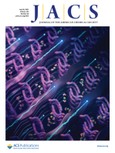
R. Lo, D. Manna, M. Lamanec, W. Wang, A. Bakandritsos, M. Dračínský, R. Zbořil, D. Nachtigallová and P. Hobza, "Addition Reaction between Piperidine and C60 to Form 1,4-Disubstituted C60 Proceeds through van der Waals and Dative Bond Complexes: Theoretical and Experimental Study," JOURNAL OF THE AMERICAN CHEMICAL SOCIETY, vol. 143, iss. 29, pp. 10930-10939, 2021.
DOI: 10.1021/jacs.1c01542, IF = 15.419
Abstract: A combined computational and experimental study reveals the character of the C60 complexes with piperidine formed under different reaction conditions. The IR and NMR experiments detect the dative bond complex, which according to NMR, is stable in the oxygen-free environment and transforms to the adduct complex in the presence of O2. Computational studies on the character of reaction channels rationalize the experimental observations. They show that the piperidine dimer rather than a single piperidine molecule is required for the complex formation. The calculations reveal significant differences in the dative bond and adduct complexes’ character, suggesting a considerable versatility in their electronic properties modulated by the environment. This capability offers new application potential in several fields, such as in energy storage devices.
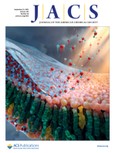
B. Mallada, B. de la Torre, J. I. Mendieta-Moreno, D. Nachtigallová, A. Matěj, M. Matoušek, P. Mutombo, J. Brabec, L. Veis, T. Cadart, M. Kotora and P. Jelínek, "On-Surface Strain-Driven Synthesis of Nonalternant Non-Benzenoid Aromatic Compounds Containing Four- to Eight-Membered Rings," JOURNAL OF THE AMERICAN CHEMICAL SOCIETY, vol. 143, iss. 36, pp. 14694-14702, 2021.
DOI: 10.1021/jacs.1c06168, IF = 15.419
Abstract: The synthesis of polycyclic aromatic hydrocarbons containing various non-benzenoid rings remains a big challenge facing contemporary organic chemistry despite a considerable effort made over the last decades. Herein, we present a novel route, employing on-surface chemistry, to synthesize nonalternant polycyclic aromatic hydrocarbons containing up to four distinct kinds of non-benzenoid rings. We show that the surface-induced mechanical constraints imposed on strained helical reactants play a decisive role leading to the formation of products, energetically unfavorable in solution, with a peculiar ring current stabilizing the aromatic character of the π-conjugated system. Determination of the chemical and electronic structures of the most frequent product reveals its closed-shell character and low band gap. The present study renders a new route for the synthesis of novel nonalternant polycyclic aromatic hydrocarbons or other hydrocarbons driven by internal stress imposed by the surface not available by traditional approaches of organic chemistry in solution.
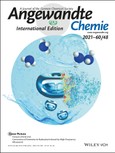
K. Biswas, J. I. Urgel, K. Xu, J. Ma, A. Sánchez‐Grande, P. Mutombo, A. Gallardo, K. Lauwaet, B. Mallada, B. Torre, A. Matěj, J. M. Gallego, R. Miranda, P. Jelínek, X. Feng and D. Écija, "On‐Surface Synthesis of a Dicationic Diazahexabenzocoronene Derivative on the Au(111) Surface," ANGEWANDTE CHEMIE INTERNATIONAL EDITION, vol. 60, iss. 48, pp. 25551-25556, 2022.
DOI: 10.1002/anie.202111863, IF = 15.336
Abstract: The atomically precise control over the size, shape and structure of nanographenes (NGs) or the introduction of heteroatom dopants into their sp2-carbon lattice confer them valuable electronic, optical and magnetic properties. Herein, we report on the design and synthesis of a hexabenzocoronene derivative embedded with graphitic nitrogen in its honeycomb lattice, achieved via on-surface assisted cyclodehydrogenation on the Au(111) surface. Combined scanning tunnelling microscopy/spectroscopy and non-contact atomic force microscopy investigations unveil the chemical and electronic structures of the obtained dicationic NG. Kelvin probe force microscopy measurements reveal a considerable variation of the local contact potential difference toward lower values with respect to the gold surface, indicative of its positive net charge. Altogether, we introduce the concept of cationic nitrogen doping of NGs on surfaces, opening new avenues for the design of novel carbon nanostructures.
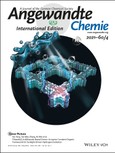
M. Lamanec, R. Lo, D. Nachtigallová, A. Bakandritsos, E. Mohammadi, M. Dračínský, R. Zbořil, P. Hobza and W. Wang, "The Existence of a N→C Dative Bond in the C60–Piperidine Complex," ANGEWANDTE CHEMIE INTERNATIONAL EDITION, vol. 60, iss. 4, pp. 1942-1950, 2021.
DOI: 10.1002/anie.202012851, IF = 15.336
Abstract: The complexes formed between carbon allotropes (C20, C60 fullerenes, graphene, and single-wall carbon nanotubes) and piperidine have been investigated by means of computational quantum chemical and experimental IR and NMR techniques. Alongside hydrogen bonds, the C⋅⋅⋅N tetrel bond, and lone-pair⋅⋅⋅π interactions, the unexpected N→C dative/covalent bond has been detected solely in complexes of fullerenes with piperidine. Non-planarity and five-member rings of carbon allotropes represent the key structural prerequisites for the unique formation of a dative N→C bond. The results of thermodynamics calculations, molecular dynamics simulations, and NMR and FTIR spectroscopy explain the specific interactions between C60 and piperidine. The differences in behavior of individual carbon allotropes in terms of dative bonding formation brings a new insight into their controllable organic functionalization.
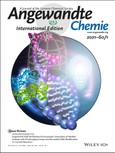
V. M. Santhini, C. Wäckerlin, A. Cahlík, M. Ondráček, S. Pascal, A. Matěj, O. Stetsovych, P. Mutombo, P. Lazar, O. Siri and P. Jelínek, "1D Coordination π–d Conjugated Polymers with Distinct Structures Defined by the Choice of the Transition Metal: Towards a New Class of Antiaromatic Macrocycles," ANGEWANDTE CHEMIE INTERNATIONAL EDITION, vol. 60, iss. 1, pp. 439-445, 2021.
DOI: 10.1002/anie.202011462, IF = 15.336
Abstract: Recently π–d conjugated coordination polymers have received a lot of attention owing to their unique material properties, although synthesis of long and defect‐free polymers remains challenging. Herein we introduce a novel on‐surface synthesis of coordination polymers with quinoidal ligands under ultra‐high vacuum conditions, which enables formation of flexible coordination polymers with lengths up to hundreds of nanometers. Moreover, this procedure allows the incorporation of different transition‐metal atoms with four‐ or two‐fold coordination. Remarkably, the two‐fold coordination mode revealed the formation of wires constituted by (electronically) independent 12‐membered antiaromatic macrocycles linked together through two C−C single bonds.

X. Peng, H. Mahalingam, S. Dong, P. Mutombo, J. Su, M. Telychko, S. Song, P. Lyu, P. W. Ng, J. Wu, P. Jelínek, C. Chi, A. Rodin and J. Lu, "Visualizing designer quantum states in stable macrocycle quantum corrals," NATURE COMMUNICATIONS, vol. 12, article no. 5895, 2021.
DOI: 10.1038/s41467-021-26198-8, IF = 14.919
Abstract: Creating atomically precise quantum architectures with high digital fidelity and desired quantum states is an important goal in a new era of quantum technology. The strategy of creating these quantum nanostructures mainly relies on atom-by-atom, molecule-by-molecule manipulation or molecular assembly through non-covalent interactions, which thus lack sufficient chemical robustness required for on-chip quantum device operation at elevated temperature. Here, we report a bottom-up synthesis of covalently linked organic quantum corrals (OQCs) with atomic precision to induce the formation of topology-controlled quantum resonance states, arising from a collective interference of scattered electron waves inside the quantum nanocavities. Individual OQCs host a series of atomic orbital-like resonance states whose orbital hybridization into artificial homo-diatomic and hetero-diatomic molecular-like resonance states can be constructed in Cassini oval-shaped OQCs with desired topologies corroborated by joint ab initio and analytic calculations. Our studies open up a new avenue to fabricate covalently linked large-sized OQCs with atomic precision to engineer desired quantum states with high chemical robustness and digital fidelity for future practical applications.
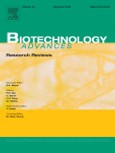
P. Makvandi, Z. Baghbantaraghdari, W. Zhou, Y. Zhang, R. Manchanda, T. Agarwal, A. Wu, T. K. Maiti, R. S. Varma and B. R. Smith, "Gum polysaccharide/nanometal hybrid biocomposites in cancer diagnosis and therapy," BIOTECHNOLOGY ADVANCES, vol. 48, art. no. 107711, 2021.
DOI: 10.1016/j.biotechadv.2021.107711, IF = 14.227
Abstract: Biopolymers are of prime importance among which gum polysaccharides hold an eminent standing owing to their high availability and non-toxic nature. Gum biopolymers offer a greener alternative to synthetic polymers and toxic chemicals in the synthesis of metal nanostructures. Metal nanostructures accessible via eco-friendly means endow astounding characteristics to gum-based biocomposites in the field of diagnosis and therapy towards cancer diseases. In this review, assorted approaches for the assembly of nanomaterials mediated by gum biopolymers are presented and their utility in cancer diagnosis and therapy, e.g., bioimaging, radiotherapy, and phototherapy, are deliberated to provide a groundwork for future stimulative research.

M. Telychko, G. Li, P. Mutombo, D. Soler-Polo, X. Peng, J. Su, S. Song, M. J. Koh, M. Edmonds, P. Jelínek, J. Wu and J. Lu, "Ultrahigh-yield on-surface synthesis and assembly of circumcoronene into a chiral electronic Kagome-honeycomb lattice," SCIENCE ADVANCES, vol. 7, iss. 3, pp. eabf0269, 2021.
DOI: 10.1126/sciadv.abf0269, IF = 14.136
Abstract: On-surface synthesis has revealed remarkable potential in the fabrication of atomically precise nanographenes. However, surface-assisted synthesis often involves multiple-step cascade reactions with competing pathways, leading to a limited yield of target nanographene products. Here, we devise a strategy for the ultrahigh-yield synthesis of circumcoronene molecules on Cu(111) via surface-assisted intramolecular dehydrogenation of the rationally designed precursor, followed by methyl radical-radical coupling and aromatization. An elegant electrostatic interaction between circumcoronenes and metallic surface drives their self-organization into an extended superlattice, as revealed by bond-resolved scanning probe microscopy measurements. Density functional theory and tight-binding calculations reveal that unique hexagonal zigzag topology of circumcoronenes, along with their periodic electrostatic landscape, confines two-dimensional electron gas in Cu(111) into a chiral electronic Kagome-honeycomb lattice with two emergent electronic flat bands. Our findings open up a new route for the high-yield fabrication of elusive nanographenes with zigzag topologies and their superlattices with possible nontrivial electronic properties.
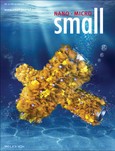
E. N. Zare, X. Zheng, P. Makvandi, H. Gheybi, R. Sartorius, C. K. Y. Yiu, M. Adeli, A. Wu, A. Zarrabi, R. S. Varma and F. R. Tay, "Nonspherical Metal‐Based Nanoarchitectures: Synthesis and Impact of Size, Shape, and Composition on Their Biological Activity," SMALL, vol. 17, iss. 17, pp. 2007073, 2021.
DOI: 10.1002/smll.202007073, IF = 13.281
Abstract: In this study a mesoporous silica nanoparticle (MSNP) based platform is developed for high-dose loading of a range of activated platinum (Pt) chemo agents that can be attached to the porous interior through the use of electrostatic and coordination chemistry under weak-basic pH conditions. In addition to the design feature for improving drug delivery, the MSNP can also be encapsulated in a coated lipid bilayer (silicasome), to improve the colloidal stability after intravenous (IV) injection. Improved pharmacokinetics and intratumor delivery of encapsulated activated oxaliplatin (1,2-diamminocyclohexane platinum(II) (DACHPt)) over free drug in an orthotopic Kras-derived pancreatic cancer (PDAC) model is demonstrated. Not only does IV injection of the DACHPt silicasome provide more efficacious cytotoxic tumor cell killing, but can also demonstrate that chemotherapy-induced cell death is accompanied by the features of immunogenic cell death (ICD) as well as a dramatic reduction in bone marrow toxicity. The added ICD features are reflected by calreticulin and high-mobility group box 1 expression, along with increased CD8+/FoxP3+ T-cell ratios and evidence of perforin and granzyme B release at the tumor site. Subsequent performance of a survival experiment, demonstrates that the DACHPt silicasome generates a significant improvement in survival outcome, which can be extended by delayed administration of the anti-PD-1 antibody.
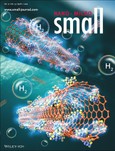
R. G. Kadam, T. Zhang, D. Zaoralová, M. Medveď, A. Bakandritsos, O. Tomanec, M. Petr, J. Zhu Chen, J. T. Miller, M. Otyepka, R. Zbořil, T. Asefa and M. B. Gawande, "Single Co‐Atoms as Electrocatalysts for Efficient Hydrazine Oxidation Reaction," SMALL, vol. 17, iss. 16, pp. 2006477.
DOI: 10.1002/smll.202006477, IF = 13.281
Abstract: Single‐atom catalysts (SACs) have aroused great attention due to their high atom efficiency and unprecedented catalytic properties. A remaining challenge is to anchor the single atoms individually on support materials via strong interactions. Herein, single atom Co sites have been developed on functionalized graphene by taking advantage of the strong interaction between Co2+ ions and the nitrile group of cyanographene. The potential of the material, which is named G(CN)Co, as a SAC is demonstrated using the electrocatalytic hydrazine oxidation reaction (HzOR). The material exhibits excellent catalytic activity for HzOR, driving the reaction with low overpotential and high current density while remaining stable during long reaction times. Thus, this material can be a promising alternative to conventional noble metal‐based catalysts that are currently widely used in HzOR‐based fuel cells. Density functional theory calculations of the reaction mechanism over the material reveal that the Co(II) sites on G(CN)Co can efficiently interact with hydrazine molecules and promote the NH bond‐dissociation steps involved in the HzOR.
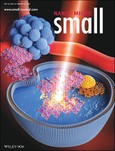
B. Singh, V. Sharma, R. P. Gaikwad, P. Fornasiero, R. Zbořil and M. B. Gawande, "Single‐Atom Catalysts: A Sustainable Pathway for the Advanced Catalytic Applications," SMALL, vol. 17, iss. 16, pp. 2006473, 2021.
DOI: 10.1002/smll.202006473, IF = 13.281
Abstract: A heterogeneous catalyst is a backbone of modern sustainable green industries; and understanding the relationship between its structure and properties is the key for its advancement. Recently, many upscaling synthesis strategies for the development of a variety of respectable control atomically precise heterogeneous catalysts are reported and explored for various important applications in catalysis for energy and environmental remediation. Precise atomic‐scale control of catalysts has allowed to significantly increase activity, selectivity, and in some cases stability. This approach has proved to be relevant in various energy and environmental related technologies such as fuel cell, chemical reactors for organic synthesis, and environmental remediation. Therefore, this review aims to critically analyze the recent progress on single‐atom catalysts (SACs) application in oxygen reduction reaction, oxygen evolution reaction, hydrogen evolution reaction, and chemical and/or electrochemical organic transformations. Finally, opportunities that may open up in the future are summarized, along with suggesting new applications for possible exploitation of SACs.
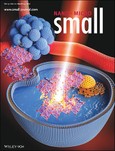
P. Sharma, S. Kumar, O. Tomanec, M. Petr, J. Zhu Chen, J. T. Miller, R. S. Varma, M. B. Gawande and R. Zbořil, "Carbon Nitride‐Based Ruthenium Single Atom Photocatalyst for CO2Reduction to Methanol," SMALL, vol. 17, iss. 16, pp. 2006478, 2021.
DOI: 10.1002/smll.202006478, IF = 13.281
Abstract: With increasing concerns for global warming, the solar‐driven photocatalytic reduction of CO2 into chemical fuels like methanol is a propitious route to enrich energy supplies, with concomitant reduction of the abundant CO2 stockpiles. Herein, a novel single atom‐confinement and a strategy are reported toward single ruthenium atoms dispersion over porous carbon nitride surface. Ruthenium single atom character is well confirmed by EXAFS absorption spectrometric analysis unveiling the cationic coordination environment for the single‐atomic‐site ruthenium center, that is formed by Ru‐N/C intercalation in the first coordination shell, attaining synergism in N–Ru–N connection and interfacial carrier transfer. From time resolved fluorescence decay spectra, the average carrier lifetime of the RuSA–mC3N4 system is found to be higher compared to m‐C3N4; the fact uncovering the crucial role of single Ru atoms in promoting photocatalytic reaction system. A high yield of methanol (1500 µmol g‐1 cat. after 6 h of the reaction) using water as an electron donor and the reusability of the developed catalyst without any significant change in the efficiency represent the superior aspects for its potential application in real industrial technologies.
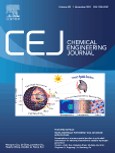
V. Dileepkumar, C. Pratapkumar, R. Viswanatha, B. M. Basavaraja, R. R. Maphanga, M. Chennabasappa, N. Srinivasa, S. Ashoka, Z. Chen, S. Rtimi, K. Jayaramulu, R. S. Varma, G. Szekely and M. Sridhar Santosh, "Nanostructured NaFeS2 as a cost-effective and robust electrocatalyst for hydrogen and oxygen evolution with reduced overpotentials," CHEMICAL ENGINEERING JOURNAL, vol. 426, pp. 131315, 2021.
DOI: 10.1016/j.cej.2021.131315, IF = 13.273
Abstract: One of the biggest challenges currently in the field of energy generation and conservation is to develop a stable, scalable and cost-effective electrocatalyst with reduced overpotentials for both hydrogen evolution reaction (HER) and oxygen evolution reaction (OER). This unprecedented effort presents a robust, non-costly ternary alkali metal-based chalcogenide (NaFeS2) as an effective and highly active electrocatalyst prepared by the hydrothermal method. The monocrystalline nature of the NaFeS2 nanostructures was shown using SAED patterns. The differences in the atomic radii of Na and Fe favors the formation of Fe-S bonds largely contributing to the enhanced electrocatalytic activity of NaFeS2. Further, a decrease in the kinetic energy of the catalytic reaction increases the electrocatalytic property of NaFeS2. We also highlighted the contribution of the high surface area, the Fermi level and the d-orbitals of Fe in enhancing the OER. NaFeS2/NF shows a current density of 200 mA cm−2 with a small potential of 1.60 V and an overpotential of 370 mV indicating that the material possesses a remarkable electrocatalytic activity outperforming other electrocatalysts in the category. Further, by displaying a potential of −220 mV, NaFeS2/NF attained a current density of −100 mA cm−2, demonstrating a significantly improved HER performance of the electrocatalyst. Also, at a potential of −220 mV, the material exhibited a high stability at a continuous electrolysis of about 30 h. The density functional theory (DFT) calculations indicated that out of the possible adsorption sites on the NaFeS2 surface, only (0 1 0) and (1 0 0) exhibit catalytically preferential adsorption energy (EH) values, which are eventually responsible for the superior electrocatalytic activity. Finally, both the experimental studies and the DFT calculations complement each other and present NaFeS2 as a potentially promising bifunctional electrocatalyst for water splitting applications, which can be scaled-up and deployed for large-scale hydrogen productions.
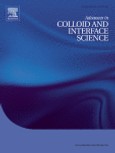
Z. Fallah, E. N. Zare, M. A. Khan, S. Iftekhar, M. Ghomi, E. Sharifi, M. Tajbakhsh, N. Nikfarjam, P. Makvandi, E. Lichtfouse, M. Sillanpaa and R. S. Varma, "Ionic liquid-based antimicrobial materials for water treatment, air filtration, food packaging and anticorrosion coatings," ADVANCES IN COLLOID AND INTERFACE SCIENCE, vol. 294, pp. 102454, 2021.
DOI: 10.1016/j.cis.2021.102454, IF = 12.984
Abstract: Efforts to widen the scope of ionic liquids applications across diverse research areas have flourished in the last two decades with developments in understanding and tailoring their physical, chemical, and biological properties. The promising applications of ionic liquids-based materials as antimicrobial systems is due to their ability and flexibility to be tailored in varying sizes, morphologies, and surface charges. Ionic liquids are also considered as greener materials. Common methods for the preparation of ionic liquid-based materials include crosslinking, loading, grafting, and combination of ionic liquids with other polymeric materials. Recent research focuses on the tuning of the biological properties to design novel ionic liquids-based antimicrobial materials. Here, the properties, synthesis and applications of ionic liquids and ionic liquids-based materials are reviewed with focus on antimicrobial activities applied to water treatment, air filtration, food packaging, and anticorrosion.
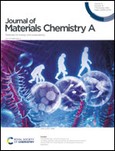
H. Saini, P. Kallem, E. Otyepková, F. Geyer, A. Schneemann, V. Ranc, F. Banat, R. Zbořil, M. Otyepka, R. A. Fischer and K. Jayaramulu, "Two-dimensional MOF-based liquid marbles: surface energy calculations and efficient oil–water separation using a ZIF-9-III@PVDF membrane," JOURNAL OF MATERIALS CHEMISTRY A, vol. 9, iss. 41, pp. 23651-23659, 2021.
DOI: 10.1039/d1ta05835e, IF = 12.732
Abstract: Superhydrophobic MOF-nanosheets assembled on the outside of an aqueous droplet form ‘liquid marbles’. A facile mechanochemical-based synthesis followed by ultrasonication was used to prepare two-dimensional superhydrophobic–oleophilic MOF nanosheets of a Co2+-based zeolitic imidazolate framework, namely ZIF-9-III ([Co4(bIm)16] with bIm− = benzimidazolate). The resulting ZIF-9-III showed excellent hydrophobicity (advancing water contact angle of 144°) and oleophilicity (oil contact angle of ≈0°). The superhydrophobic behavior originated from its predominant outer (002) surface, which featured nanoscale corrugation caused by the exposed benzimidazole groups. This behavior was corroborated by inverse gas chromatography measurements to determine the surface energies of bulk exfoliated 2D ZIF-9-III nanosheets and 3D ZIF-9-I. Taking advantage of the unique surface properties, including low surface energy and good moisture stability, we prepared ZIF-9-III@PVDF (PVDF = polyvinylidene fluoride) membranes following the non-solvent induced phase inversion (NIPS) process. The resulting membranes were exploited in real-time oil/water separation and featured remarkably high adsorption capacity and anti-staining properties. Therefore, this work opens the door to developing new superhydrophobic MOF-based composite materials with permeant porosity, which may enable applications in self-cleaning membranes for oil–water separation.
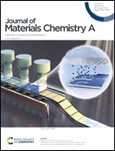
K. Jayaramulu, M. Esclance DMello, K. Kesavan, A. Schneemann, M. Otyepka, S. Kment, C. Narayana, S. B. Kalidindi, R. S. Varma, R. Zboril and R. A. Fischer, "A multifunctional covalently linked graphene–MOF hybrid as an effective chemiresistive gas sensor," JOURNAL OF MATERIALS CHEMISTRY A, vol. 9, iss. 32, pp. 17434-17441, 2021.
DOI: 10.1039/d1ta03246a, IF = 12.732
Abstract: A hybrid of GA@UiO-66-NH2 was synthesized based on the covalent assembly of graphene acid (GA) and the amine functionalized UiO-66 metal–organic framework through amide bonds. This strategy endows the material with unique properties, such as hierarchical pores, a porous conductive network decorated with functional groups, a high specific surface area, and a good chemical and thermal stability. The resultant hybrid has an electrical resistance of ∼104 Ω, whereas the pristine GA and UiO-66-NH2 possess an electrical resistance of ∼102 Ω and ∼109 Ω, respectively. The hybrid GA@UiO-66-NH2 was demonstrated for CO2 chemiresistive sensing and displayed a very fast response and quick recovery time of ∼18 s for 100% CO2, at 200 °C. While the pristine GA exhibits negligible response under the same conditions, GA@UiO-66-NH2 exhibited a response of 10 ± 0.6%. Further, in situ temperature dependent Raman studies during CO2 exposure confirm the presence of strong hydrogen bonding interaction between CO2 and the amide functionality present on GA@UiO-66-NH2. The resulting gas sensing characteristics of GA@UiO-66-NH2 are majorly attributed to the better interaction of CO2 at the amide/amine functional groups and the readily accessible hierarchical pores. This design strategy opens new horizons in the development of covalently linked hybrids with hierarchical porous conductive networks which can help to improve the gas sensing properties of MOF-based materials.
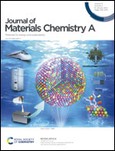
E. Wierzbicka, M. Altomare, M. Wu, N. Liu, T. Yokosawa, D. Fehn, S. Qin, K. Meyer, T. Unruh, E. Spiecker, L. Palmisano, M. Bellardita, J. Will and P. Schmuki, "Reduced grey brookite for noble metal free photocatalytic H2 evolution," JOURNAL OF MATERIALS CHEMISTRY A, vol. 9, iss. 2, pp. 1168-1179, 2021.
DOI: 10.1039/d0ta09066b, IF = 12.732
Abstract: Herein we introduce for the first time a reduced “grey” brookite TiO2 photocatalyst, produced by thermal hydrogenation of brookite nanoparticles, that shows a remarkable noble metal free photocatalytic H2 evolution. Its activity is substantially higher than that of other TiO2 polymorphs, i.e. anatase or rutile, comparably sized and activated by hydrogenation under optimized conditions. Along with brookite powders, an oriented brookite single crystal was investigated as a defined surface to confirm the effects of the hydrogenation treatment. By a combination of electron paramagnetic resonance (EPR), electron and X-ray characterization techniques applied to the powders and single crystal, we find that hydrogenation forms in brookite a defective crystalline surface layer rich in Ti3+ states. Amorphization effects, i.e. forming the so called “amorphous shell” as reported in previous work for black anatase TiO2, were not detected. Overall, we provide experimental evidence that hydrogenation forms in brookite a surface strained zone with point defects that are mediators for electron transfer to H2O, leading to a significantly enhanced noble metal free photocatalytic H2 evolution in comparison to anatase.
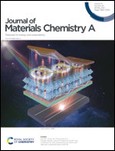
T. Li, T. Jing, D. Rao, X. Jia, Y. Zuo, Š. Kment and R. Zbořil, "In situ coating amorphous boride on ternary pyrite-type boron sulfide for highly efficient oxygen evolution," JOURNAL OF MATERIALS CHEMISTRY A, vol. 9, iss. 20, pp. 12283-12290, 2021.
DOI: 10.1039/d0ta10633j, IF = 12.732
Abstract: Multimetallic pyrite-type sulfides have been promising electrocatalytic materials for the electrochemical oxygen evolution reaction (OER), but sulfides still require further improvement due to the easy oxidization of surface atoms and the intrinsically low activity. Herein, we synthesized the ternary pyrite-type boron sulfide in situ coated by amorphous FeCoNiBx as an efficient and durable heterogeneous catalyst for OER. The spherical aberration-corrected transmission electron microscopy clearly shows that the adjacent crystals exhibit different phases with an approximately 2 nm amorphous layer on the external surface of the catalysts. This hybrid catalyst exhibits the superior OER activity with an attractive overpotential of 419.4 mV vs. RHE at 100 mA cm−2 in 1 M KOH solution and excellent stability over 10 h. Density functional theory calculations reveal that the B atoms can attract the electrons from metals, resulting in the expansion of the unoccupied d orbitals of metals, which is beneficial to attract the electrons from OH− groups, thus improving the OER performance of the catalyst combined with its special heterostructure. This study provides an advantageous method for engineering the electrical structure of pyrite-type sulfides for high OER activity and long durability.
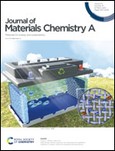
S. Rej, M. Bisetto, A. Naldoni and P. Fornasiero, "Well-defined Cu2O photocatalysts for solar fuels and chemicals," JOURNAL OF MATERIALS CHEMISTRY A, vol. 9, iss. 10, pp. 5915-5951, 2021.
DOI: 10.1039/d0ta10181h, IF = 12.732
Abstract: The shape-controlled synthesis of cuprous oxide (Cu2O) photocatalysts with both low or high index crystal planes has received increasing attention due to their unique facet-dependent properties. Since they are cheap and earth abundant, these well-defined Cu2O nanostructures are extensively used for different photocatalytic reactions, also because of their strong visible light absorption capability. However, further development will still be needed to enhance the efficiency and photostability of Cu2O to expand its industrial application. We start this review by summarizing the synthetic advancement in the facet engineering of Cu2O and other associated hybrid Cu2O-based heterostructures with a special emphasis put on their growth mechanism. We then discuss different facet-dependent properties, which are relevant to photocatalysis. In the subsequent section, we present a critical discussion on the photocatalytic performance of faceted Cu2O nanostructures during organic synthesis, hydrogen production, and carbon dioxide photoreduction. The relation between photocatalytic efficiency and product selectivity with exposed crystal facets or with different compositions of hybrid nanostructures is also discussed. Finally, important strategies are proposed to overcome the photostability issue, while outlining the course of future development to further boost the technological readiness of well-defined Cu2O-based photocatalysts.
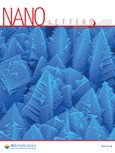
J. Su, W. Fan, P. Mutombo, X. Peng, S. Song, M. Ondráček, P. Golub, J. Brabec, L. Veis, M. Telychko, P. Jelínek, J. Wu and J. Lu, "On-Surface Synthesis and Characterization of [7]Triangulene Quantum Ring," NANO LETTERS, vol. 21, iss. 1, pp. 861-867, 2021.
DOI: 10.1021/acs.nanolett.0c04627, IF = 11.189
Abstract: The ability to engineer geometrically well-defined antidots in large triangulene homologues allows for creating an entire family of triangulene quantum rings (TQRs) with tunable high-spin ground state, crucial for next-generation molecular spintronic devices. Herein, we report the synthesis of an open-shell [7]triangulene quantum ring ([7]TQR) molecule on Au(111) through the surface-assisted cyclodehydrogenation of a rationally designed kekulene derivative. Bond-resolved scanning tunneling microscopy (BR-STM) unambiguously imaged the molecular backbone of a single [7]TQR with a triangular zigzag edge topology, which can be viewed as [7]triangulene decorated with a coronene-like antidot in the center. Additionally, dI/dV mapping reveals that both inner and outer zigzag edges contribute to the edge-localized and spin-polarized electronic states of [7]TQR. Both experimental results and spin-polarized density functional theory calculations indicate that [7]TQR retains its open-shell septuple ground state (S = 3) on Au(111). This work demonstrates a new route for the design of high-spin graphene quantum rings for future quantum devices.
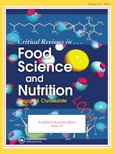
A. Taheri-Kafrani, S. Kharazmi, M. Nasrollahzadeh, A. Soozanipour, F. Ejeian, P. Etedali, H. Mansouri-Tehrani, A. Razmjou, S. M. Yek and R. S. Varma, "Recent developments in enzyme immobilization technology for high-throughput processing in food industries," CRITICAL REVIEWS IN FOOD SCIENCE AND NUTRITION, vol. 61, iss. 19, pp. 3160-3196, 2021.
DOI: 10.1080/10408398.2020.1793726, IF = 11.176
Abstract: The demand for food and beverage markets has increased as a result of population increase and in view of health awareness. The quality of products from food processing industry has to be improved economically by incorporating greener methodologies that enhances the safety and shelf life via the enzymes application while maintaining the essential nutritional qualities. The utilization of enzymes is rendered more favorable in industrial practices via the modification of their characteristics as attested by studies on enzyme immobilization pertaining to different stages of food and beverage processing; these studies have enhanced the catalytic activity, stability of enzymes and lowered the overall cost. However, the harsh conditions of industrial processes continue to increase the propensity of enzyme destabilization thus shortening their industrial lifespan namely enzyme leaching, recoverability, uncontrollable orientation and the lack of a general procedure. Innovative studies have strived to provide new tools and materials for the development of systems offering new possibilities for industrial applications of enzymes. Herein, an effort has been made to present up-to-date developments on enzyme immobilization and current challenges in the food and beverage industries in terms of enhancing the enzyme stability.

D. A. Giannakoudakis, I. Anastopoulos, M. Barczak, Ε. Αntoniou, K. Terpiłowski, E. Mohammadi, M. Shams, E. Coy, A. Bakandritsos, I. A. Katsoyiannis, J. C. Colmenares and I. Pashalidis, "Enhanced uranium removal from acidic wastewater by phosphonate-functionalized ordered mesoporous silica: Surface chemistry matters the most," JOURNAL OF HAZARDOUS MATERIALS, vol. 413, pp. 125279, 2021.
DOI: 10.1016/j.jhazmat.2021.125279, IF = 10.588
Abstract: The removal of uranium species from aqueous phases using non-hazardous chemicals is still an open challenge, and remediation by adsorption is a prosperous strategy. Among the most crucial concerns regarding the design of an efficient material as adsorbent are, except the cost and the green character, the feasibility to be stable and effective under acidic pH, and to selectively adsorb the desired metal ion (e.g. uranium). Herein, we present a phosphonate functionalized ordered mesoporous silica (OMS-P), prepared by a one-step co-condensation synthesis. The physicochemical features of the material were determined by HR-TEM, XPS, EDX, N2 sorption, and solid NMR, while the surface zeta potential was also measured. The removal efficiency was evaluated at two different temperatures (20 and 50 °C) in acidic environment to avoid interferences like solid phase formation or carbonate complexation and the adsorption isotherms, including data fitting with Langmuir and Freundlich models and thermodynamic parameters are presented and discussed. The high and homogeneous dispersion of the phosphonate groups within the entire silica’s structure led to the greatest reported up-todays capacity (345 mg/g) at pH = 4, which was achieved in less than 10 min. Additionally, OMS-P showed that the co-presence of other polyvalent cation like Eu(III) did not affect the efficiency of adsorption, which occurs via inner-sphere complex formation. The comparison to the non-functionalized silica (OMS) revealed that the key feature towards an efficient, stable, and selective removal of the U(VI) species is the specific surface chemistry rather than the textural and structural features. Based on all the results and spectroscopic validations of surface adsorbed U(VI), the main interactions responsible for the elevated uranium removal were proposed.

M. Nasrollahzadeh, M. Sajjadi, S. Iravani and R. S. Varma, "Green-synthesized nanocatalysts and nanomaterials for water treatment: Current challenges and future perspectives," JOURNAL OF HAZARDOUS MATERIALS, vol. 401, pp. 123401, 2021.
DOI: 10.1016/j.jhazmat.2020.123401, IF = 10.588
Abstract: Numerous hazardous environmental pollutants in water bodies, both organic and inorganic, have become a critical global issue. As greener and bio-synthesized versions of nanoparticles exhibit significant promise for wastewater treatment, this review discusses trends and future prospects exploiting the sustainable applications of green-synthesized nanocatalysts and nanomaterials for the removal of contaminants and metal ions from aqueous solutions. Recent trends and challenges about these nanocatalysts and nanomaterials and their potential applications in wastewater treatment and water purification are highlighted including toxicity and biosafety issues. This review delineates the pros and cons and critical issues pertaining to the deployment of these nanomaterials endowed with their superior surface area, mechanical properties, significant chemical reactivity, and cost-effectiveness with low energy consumption, for removal of hazardous materials and contaminants from water; comprehensive coverage of these materials for industrial wastewater remediation, and their recovery is underscored by recent advancements in nanofabrication, encompassing intelligent and smart nanomaterials.
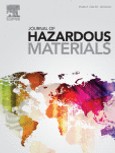
T. T. Salunkhe, R. S. Varma, A. N. Kadam, S. Lee, Y. Lee, J. Hur and I. T. Kim, "Scraps to superior anodes for Li-ion batteries: Sustainable and scalable upgrading of waste rust," JOURNAL OF HAZARDOUS MATERIALS, vol. 410, art.no. 124571, 2021.
DOI: 10.1016/j.jhazmat.2020.124571, IF = 10.588
Abstract: The abundant iron rust of no value generated from industrial scraps presents environmental problem and burden. Chemical etching and related methods deployed to convert rust into α-Fe2O3 nanoparticles, however, have serious shortcomings namely higher chemical consumption and generation of secondary pollution. In an unprecedented illustration, herein the intercalation of ammonium bicarbonate (ABC) as a gaseous bubble template into bulky iron rust is described; formation of ammonium iron carbonate hydroxide hydrate and the reduction of particle size using a simple ball milling method followed by calcination is accomplished. The salient features of ABC, optimization of ratios (rust: ABC), and the ideal calcination temperature were optimized for attaining desirable properties of meso-α-Fe2O3 NPs. The electrode obtained at 500 °C delivered a superior reversible capacity of 1,055 mAh g−1 at 1 A g−1 over 100 cycles, which is comparable to the best performance reported for meso-α-Fe2O3 NPs. The superior electrochemical performance is ascribed to the porous nature of meso-α-Fe2O3 NPs maximizing the surface area, ensuring good charge transfer kinetics and enhanced pseudocapacitive contribution. Thus, we believe that the high-energy ball milling (HEBM) process represents a novel route for the scalable recycling of iron rust scraps for promoting the sustainable production of lithium-ion batteries.

M. Brumovský, J. Oborná, P. Lacina, M. Hegedüs, O. Sracek, J. Kolařík, M. Petr, J. Kašlík, T. Hofmann and J. Filip, "Sulfidated nano-scale zerovalent iron is able to effectively reduce in situ hexavalent chromium in a contaminated aquifer," JOURNAL OF HAZARDOUS MATERIALS, vol. 405, pp. 124665, 2021.
DOI: 10.1016/j.jhazmat.2020.124665, IF = 10.588
Abstract: In a number of laboratory studies, sulfidated nanoscale zero-valent iron (S-nZVI) particles showed increased reactivity, reducing capacity, and electron selectivity for Cr(VI) removal from contaminated waters. In our study, core-shell S-nZVI particles were successfully injected into an aquifer contaminated with Cr(VI) at a former chrome plating facility. S-nZVI migrated towards monitoring wells, resulting in a rapid decrease in Cr(VI) and Crtot concentrations and a long-term decrease in groundwater redox potential observed even 35 m downstream the nearest injection well. Characterization of materials recovered from the injection and monitoring wells confirmed the presence of nZVI particles, together with iron corrosion products. Chromium was identified on the surface of the recovered iron particles as Cr(III), and its occurrence was linked to the formation of insoluble chromium-iron (oxyhydr)oxides such as CrxFe(1−x)(OH)3(s). Injected S-nZVI particles formed aggregates, which were slowly transformed into iron (oxyhydr)oxides and carbonate green rust. Elevated contents of Fe0 were detected even several months after injection, indicating good S-nZVI longevity. The sulfide shell was gradually disintegrated and/or dissolved. Geochemical modelling confirmed the overall stability of the resulting Cr(III) phase at field conditions. This study demonstrates the applicability of S-nZVI for the remediation of a Cr(VI)-contaminated aquifer.

G. Asimakopoulos, M. Baikousi, C. Salmas, A. B. Bourlinos, R. Zboril and M. A. Karakassides, "Advanced Cr(VI) sorption properties of activated carbon produced via pyrolysis of the “Posidonia oceanica” seagrass," JOURNAL OF HAZARDOUS MATERIALS, vol. 405, pp. 124274, 2021.
DOI: 10.1016/j.jhazmat.2020.124274, IF = 10.588
Abstract: This research deals with the removal of Cr(VI), one of the most toxic heavy metal in biological systems, from wastewater by using activated carbon produced via pyrolysis and chemical activation of “Posidonia oceanica”. That is the most important and well-studied seagrass species of the Mediterranean Sea. The as produced activated carbon exhibited high specific surface area up to 1563 m2/g and a cumulative pore volume of 0.74 cm3/g, allocated to 74% micro-pores and 26% to meso-macro- pores. The adsorption capacity of Cr(VI) into Posidonia oceanica activated carbon was studied via batch experiments considering the contact time, the initial concentration and the pH parameters. The results were interpreted using four different adsorption kinetic models. The activated carbon material seems to exhibit excellent sorption properties with rapid removal capability for Cr(VI). The estimated maximum uptake capacity at equilibrium stage was ~120 mg/g. Also, the initial adsorption rate ri was dependent on the initial Cr(VI) concentration in aqueous solution and it was from 77 mg/(g*h) to 264 mg/(g*h). The best fitted kinetic model seems to be the Diffusion-Chemisorption model with the rate constant KDC of the Cr(VI) ions transfer from liquid to solid particles extend from 52 to 78 mg/(g*h0.5).
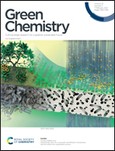
M. Tavakolizadeh, A. Pourjavadi, M. Ansari, H. Tebyanian, S. J. Seyyed Tabaei, M. Atarod, N. Rabiee, M. Bagherzadeh and R. S. Varma, "An environmentally friendly wound dressing based on a self-healing, extensible and compressible antibacterial hydrogel," GREEN CHEMISTRY, vol. 23, iss. 3, pp. 1312-1329, 2021.
DOI: 10.1039/d0gc02719g, IF = 10.182
Abstract: The design of wound dressing hydrogels is of utmost importance in healthcare with desired remedial effects, self-healing ability, cell affinity, and appropriate mechanical properties, particularly for healing skin wounds; excellent wound tissue adhesiveness is imperative. Here, an ultra-tough and self-healable double-network (DN) hydrogel is designed based on salep/poly(vinyl alcohol) that is endowed with superior tissue adhesiveness and cell affinity as demonstrated for critical and burn wound healing in rats. The self-healing capability of the hydrogel is attained via hydrogen bonds and Schiff-base cross-linking between oxidized salep (OSa) and ethylene diamine-modified salep (SaHEA) chains (OSEA network). The interaction of hydroxyl groups of the poly(vinyl alcohol) (PVA) network effectively facilitates to create a stable mechanical structure and endow self-healing ability. The ensuing novel hydrogel is endowed with excellent self-healing ability, high mechanical strength (Young's modulus of up to 14 kPa; high fracture energy of up to 90 kJ m−3; compressive stress of 400 kPa), good tissue adhesiveness (up to 48 N m−1 adhesive strength), and superior therapeutic properties (cell viability of A375 cells >80%; remarkable healing of >60% in 14 and >98% in 21 days). The macroscopic evaluation revealed healing >80% in 14 days and 100% in 21 days that is achieved by combining both networks in a single system along with Arnebia extract and Ag nanoparticles (Ag NPs) in green media. In vitro and in vivo tests affirmed that the PVA/OSEA DN hydrogel could be an excellent candidate for skin tissue regeneration in medical applications.
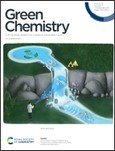
B. Gholipour, S. Shojaei, S. Rostamnia, M. R. Naimi-Jamal, D. Kim, T. Kavetskyy, N. Nouruzi, H. W. Jang, R. S. Varma and M. Shokouhimehr, "Metal-free nanostructured catalysts: sustainable driving forces for organic transformations," GREEN CHEMISTRY, vol. 23, iss. 17, pp. 6223-6272, 2021.
DOI: 10.1039/d1gc01366a, IF = 10.182
Abstract: Over the past few decades, research on heterogeneous catalysts, especially metal-free catalysts in industrial and research transformations, has intensified. Despite the obvious benefits of heterogeneous transition metal catalysts in quick substrate activation and acceleration of reactions, cost-effectiveness, high activity in harsh process conditions, ensuing pollution and sustainability issues are still some of the significant challenges. In this context, metal-free catalysts have been widely studied over the past few decades. The persistent question in the field of metal-free catalysts is their scalable design and the development with an acceptable economic approach and biocompatibility to achieve green and selective synthesis in the domain of industry and pharmaceuticals, as well as organic transformations. This article portrays recent developments in the exploitation of metal-free catalysts in organic synthesis.
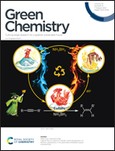
Q. Lu, K. Eid, W. Li, A. M. Abdullah, G. Xu and R. S. Varma, "Engineering graphitic carbon nitride (g-C3N4) for catalytic reduction of CO2 to fuels and chemicals: strategy and mechanism," GREEN CHEMISTRY, vol. 23, iss. 15, pp. 5394-5428, 2021.
DOI: 10.1039/d1gc01303c, IF = 10.182
Abstract: The reduction of carbon dioxide to useful fuels/chemicals, such as methane, formic, and methanol, is an innovative way to address looming energy and environmental issues. Graphitic carbon nitride (g-C3N4), as a greener and low-cost catalyst for the electrocatalytic and photocatalytic carbon dioxide reduction reaction (CO2RR) to provide usable fuels, is endowed with numerous appealing attributes, e.g., Earth-abundant resources, facile synthesis, metal-free nature, catalytic properties, and unique thermal-physical–chemical stability. Articles on the use of g-C3N4 for CO2 transformation have increased significantly in the past decade, and it is important to provide timely updates in this emerging and active research area. This review emphasizes the rational structural engineering of g-C3N4, including doping (i.e., metal, non-metal, and molecular) and heterojunction formation (i.e., metal, metal oxide, metal phosphide, metal hydroxide, metal complex, Ag-halides, and carbon materials) for electrocatalytic, photoelectrocatalytic, and photocatalytic CO2RR. Besides, an in-depth deciphering of the CO2RR mechanism from experimental, theoretical, and fundamental concepts is provided, including deliberation on the sources/emission and strategies to avoid/reduce CO2 emission. Lastly, a brief conclusion and outlook on the challenges and future prospects are highlighted to assist further in the rational design of the g-C3N4-based catalyst as a selective and efficient catalyst for the CO2RR.
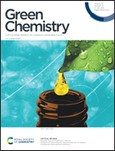
Z. Khorsandi, A. R. Hajipour, M. R. Sarfjoo and R. S. Varma, "A Pd/Cu-Free magnetic cobalt catalyst for C–N cross coupling reactions: synthesis of abemaciclib and fedratinib," GREEN CHEMISTRY, vol. 23, iss. 14, pp. 5222-5229, 2021.
DOI: 10.1039/d1gc00518a, IF = 10.182
Abstract: Herein, the synthesis of a nano-catalytic system comprising magnetic nanoparticles as the core and edible natural ligands bearing functional groups as supports for cobalt species is described. Subsequent to its characterization, the efficiency of the catalyst was investigated for C–N cross-coupling reactions using assorted derivatives of amines and aryl halides. This novel and easily accessible Pd- and Cu-free catalyst exhibited good catalytic activity in these reactions using γ-valerolactone (GVL) at room temperature; good recyclability bodes well for the future application of this strategy. The introduced catalytic system is attractive in view of the excellent efficiency in an array of coupling reactions and its versatility is illustrated in the synthesis of abemaciclib and fedratinib, which are FDA-approved new and significant anti-cancer medicinal compounds that are prepared under green reaction conditions.
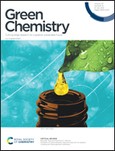
M. Jouyandeh, S. S. Mousavi Khadem, S. Habibzadeh, A. Esmaeili, O. Abida, V. Vatanpour, N. Rabiee, M. Bagherzadeh, S. Iravani, M. Reza Saeb and R. S. Varma, "Quantum dots for photocatalysis: synthesis and environmental applications," GREEN CHEMISTRY, vol. 23, iss. 14, pp. 4931-4954, 2021.
DOI: 10.1039/d1gc00639h, IF = 10.182
Abstract: Quantum dots (QDs) with unique properties have been widely employed for energy, environmental, and health care applications. Green natural resources, because of their renewability, sustainability, abundance, low cost, and environmental-friendliness, can be utilized for the synthesis of diverse nanoarchitectures. This critical review highlights the recent advancements in the greener and sustainable synthesis of carbon, graphene and metal-based QDs, as well as their significant environmental applications such as photocatalytic hydrogen production, degradation of hazardous contaminants/pollutants and reduction of CO2, with emphasis on the important challenges and future perspectives.
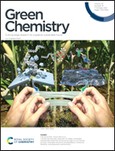
B. Rabha, K. K. Bharadwaj, N. Boro, A. Ghosh, S. K. Gogoi, R. S. Varma and D. Baishya, "Cheilocostus speciosus extract-assisted naringenin-encapsulated poly-ε-caprolactone nanoparticles: evaluation of anti-proliferative activities," GREEN CHEMISTRY, vol. 23, iss. 19, pp. 7701-7711, 2021.
DOI: 10.1039/d1gc02260a, IF = 10.182
Abstract: Cheilocostus speciosus (CS) aqueous leaf extract has been used as a biosurfactant in a simple one-step nano-precipitation method for the synthesis of leaf extract (PE)-mediated polycaprolactone (PCL) nanoparticles (NPs) encapsulating naringenin (N). The ensuing NPs comprising naringenin (PCL-PE-N-NPs) exhibited better bioavailability and enhanced antiproliferative effects. The successful formation of NPs was confirmed by multiple characterization techniques such as FT-IR, XRD, FESEM, AFM, TEM, DLS, and zeta potential. The in vitro drug release profile of naringenin from PCL-PE-N-NPs followed Higuchi model kinetics and displayed a controlled release pattern of 94% for up to 48 h with enhanced anticancer activity (IC50 at 83.468 ± 1.59 μg ml−1 against HepG2 cell lines in comparison to the free bioactive naringenin value of IC50 at 161.828 ± 7.58 μg ml−1). Thus, a safe, eco-friendly, non-toxic strategy is presented for synthesizing active naringenin-encapsulated polymer NPs deploying a green and renewable source as a functional surfactant and stabilizer. This bodes well for the development of a safe drug delivery agent in cancer therapy.
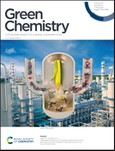
S. K. Verma, P. K. Panda, P. Kumari, P. Patel, A. Arunima, E. Jha, S. Husain, R. Prakash, R. Hergenröder, Y. K. Mishra, R. Ahuja, R. S. Varma and M. Suar, "Determining factors for the nano-biocompatibility of cobalt oxide nanoparticles: proximal discrepancy in intrinsic atomic interactions at differential vicinage," GREEN CHEMISTRY, vol. 23, iss. 9, pp. 3439-3458, 2021.
DOI: 10.1039/d1gc00571e, IF = 10.182
Abstract: The abounding use of cobalt oxide nanoparticles (Co3O4) requires a detailed understanding of their environmental and biomedical nanotoxicity and an eminent solution to the associated hazards; molecular and atomic aspects of the subject are poorly understood. This study reconnoiters the in vitro and in vivo nanotoxicity of Co3O4 nanoparticles using human colon cell lines and the embryonic zebrafish model. The synthesis of Co3O4 nanoparticles (G-CoONP) is delineated via the deployment of a medicinal herb, Calotropis gigantea, as an alternative greener solution; stable G-CoONP with a size of 41 ± 15 nm are attainable. Gas chromatography-mass spectroscopy (GCMS) analysis revealed the role of floral extract biomolecules in G-CoO NP synthesis. The in vitro and in vivo effects are accompanied by dose-dependent exposure at the molecular level by eliciting Sod1 and P53 genes up to 8.2 and 5.2 fold leading to a significant change in the reactive oxygen species and apoptosis level. It unraveled the toxicity of the cobalt oxide NP as increased apoptosis elicited by higher oxidative stress due to the accumulation and internalization of nanoparticles in cells and embryos. Green synthesized G-CoONP exhibited higher biocompatibility than commercial C-CoONP with reduced apoptosis and ROS in both human colon cell lines and zebrafish embryos. In silico analysis portrayed the intrinsic atomic interaction of Co3O4 NP with cysteine, arginine, and histidine of oxidative stress (SOD1/sod1) and apoptosis (TP53/tp53) proteins leading to dysregulation of their structural and functional integrity in human and zebrafish, respectively. A proximal discrepancy in intrinsic atomic interaction due to the H-bonding and hydrophobic interaction at the differential in vitro and in vivo vicinage served as a key determinant factor for the cellular biocompatibility of Co3O4 nanoparticles.
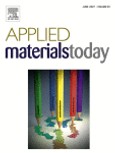
A. S. Roy, A. Cheruvathoor Poulose, A. Bakandritsos, R. S. Varma and M. Otyepka, "2D graphene derivatives as heterogeneous catalysts to produce biofuels via esterification and trans-esterification reactions," APPLIED MATERIALS TODAY, vol. 23, iss. , pp. 101053, 2022.
DOI: 10.1016/j.apmt.2021.101053, IF = 10.041
Abstract: The shortage of fossil fuels and burgeoning global warming has increased the demand for clean energy making biodiesel a promising alternative to conventional fuels. Heterogeneous catalysis plays a vital role in the cost-effectiveness of the expensive conventional biodiesel synthesis via transesterification reactions between lipid feedstocks such as vegetable oil or long chain fatty acids and alcohols. 2D carbons, such as graphene derivatives, have been used as catalysts for the biodiesel production owing to their extraordinary physical, electronic and mechanical properties. However, irreversible agglomeration, restacking of sheets, low bulk density leading to low catalyst mass/reactor volume ratio, and poor dispersibility of the graphene-based catalysts in most organic solvents are major challenges, restricting their use as catalysts or heterogeneous catalysts support. The properties of 2D carbons can be improved by introducing appropriate functionalities and defects, doping by heteroatoms and grafting of nanoparticles for the selective conversion of non-conventional sources into biofuels. Herein, we review the recent developments in graphene derivatives for the catalytic esterification and transesterification reactions, through a broad discussion on the synthesis of heterogeneous graphene derivatives as catalysts and their application in biodiesel production.
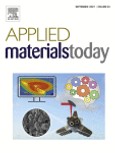
E. N. Zare, T. Agarwal, A. Zarepour, F. Pinelli, A. Zarrabi, F. Rossi, M. Ashrafizadeh, A. Maleki, M. Shahbazi, T. K. Maiti, R. S. Varma, F. R. Tay, M. R. Hamblin, V. Mattoli and P. Makvandi, "Electroconductive multi-functional polypyrrole composites for biomedical applications," APPLIED MATERIALS TODAY, vol. 24, pp. 101117, 2021.
DOI: 10.1016/j.apmt.2021.101117, IF = 10.041
Abstract: Polypyrrole is an example of inherently electrically conductive polymer that is employed in the biomedical arena because of its low cost, excellent electroconductive properties, and good biocompatibility. Because many body tissues respond to electrical fields, polypyrrole-based nanocomposites have become an important class of bio-conductive material. Nanocomposites prepared by blending polypyrrole with other biopolymers or nanomaterials show marked improvements in physicochemical, mechanical, and biological properties. The present review outlines the structure and synthesis of polypyrrole, as well as the physical and mechanical properties of polypyrrole-containing nanocomposites. The antimicrobial and antioxidant activities and possible cytotoxicity of these nanocomposites are summarized and critiqued. A survey of the biomedical applications of polypyrrole as biosensors, drug delivery systems, tissue engineering scaffolds, or photo-thermal therapeutic agents is presented to spur further advances in this exciting field of research.
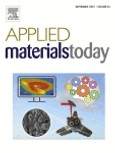
P. Makvandi, A. Zarepour, X. Zheng, T. Agarwal, M. Ghomi, R. Sartorius, E. N. Zare, A. Zarrabi, A. Wu, T. K. Maiti, B. R. Smith, R. S. Varma, F. R. Tay and V. Mattoli, "Non-spherical nanostructures in nanomedicine: From noble metal nanorods to transition metal dichalcogenide nanosheets," APPLIED MATERIALS TODAY, vol. 24, pp. 101107, 2021.
DOI: 10.1016/j.apmt.2021.101107, IF = 10.041
Abstract: Non-spherical metal nanomaterials such as noble metal or transition metal dichalcogenides and MXenes have been employed in different biomedical facets. Because the biological properties of these nanocompounds are governed by their architecture and composition, such factors should be considered prior to their adoption for clinical use. The architecture of metal-based nanomaterials affects cell viability by virtue of the variable geometry of these nanomaterials as well as their physicochemical interactions with mammalian cell membranes. In the present review, the effects of parameters such as interfacial interaction and aspect ratio on cellular uptake of non-spherical metallic nanomaterials will be discussed. The application of these nanomaterials as biosensors, in cancer diagnosis and therapy, tissue engineering and regenerative medicine will also be thoroughly reviewed.
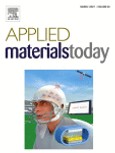
M. Langer, M. Paloncýová, M. Medveď, M. Pykal, D. Nachtigallová, B. Shi, A. J. Aquino, H. Lischka and M. Otyepka, "Progress and challenges in understanding of photoluminescence properties of carbon dots based on theoretical computations," APPLIED MATERIALS TODAY, vol. 22, pp. 100924, 2021.
DOI: 10.1016/j.apmt.2020.100924, IF = 10.041
Abstract: Carbon dots (CDs), including graphene quantum dots, carbon nanodots, carbon quantum dots, and carbonized polymer dots, belong to extensively studied nanomaterials with a very broad application potential resulting from their bright photoluminescence (PL), high (photo)stability, low toxicity and great biocompatibility. However, the design of CDs with tailored properties is still hampered by a fairly limited understanding of the CD PL, which stems from their rather complex structure and variability of the PL centers. Theoretical calculations provide valuable insights into the nature of the excited states and the source of PL. In this review, we focus on state-of-the-art theoretical methods for the description of absorption and PL of CDs and their limitations, along with providing an overview of theoretical studies addressing structural models and the electronic structure of various types of CDs in the context of their overall optical properties. Besides the assessment of the current state of knowledge, we also highlight the opportunity for further advancements in the field.
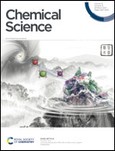
M. Medveď, M. W. H. Hoorens, M. Di Donato, A. D. Laurent, J. Fan, M. Taddei, M. Hilbers, B. L. Feringa, W. J. Buma and W. Szymanski, "Tailoring the optical and dynamic properties of iminothioindoxyl photoswitches through acidochromism," CHEMICAL SCIENCE, vol. 12, iss. 12, pp. 4588-4598, 2021.
DOI: 10.1039/d0sc07000a, IF = 9.825
Abstract: Multi-responsive functional molecules are key for obtaining user-defined control of the properties and functions of chemical and biological systems. In this respect, pH-responsive photochromes, whose switching can be directed with light and acid–base equilibria, have emerged as highly attractive molecular units. The challenge in their design comes from the need to accommodate application-defined boundary conditions for both light- and protonation-responsivity. Here we combine time-resolved spectroscopic studies, on time scales ranging from femtoseconds to seconds, with density functional theory (DFT) calculations to elucidate and apply the acidochromism of a recently designed iminothioindoxyl (ITI) photoswitch. We show that protonation of the thermally stable Z isomer leads to a strong batochromically-shifted absorption band, allowing for fast isomerization to the metastable E isomer with light in the 500–600 nm region. Theoretical studies of the reaction mechanism reveal the crucial role of the acid–base equilibrium which controls the populations of the protonated and neutral forms of the E isomer. Since the former is thermally stable, while the latter re-isomerizes on a millisecond time scale, we are able to modulate the half-life of ITIs over three orders of magnitude by shifting this equilibrium. Finally, stable bidirectional switching of protonated ITI with green and red light is demonstrated with a half-life in the range of tens of seconds. Altogether, we designed a new type of multi-responsive molecular switch in which protonation red-shifts the activation wavelength by over 100 nm and enables efficient tuning of the half-life in the millisecond–second range.
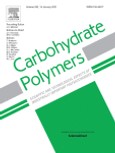
D. Rotrekl, P. Šalamúnová, L. Paráková, O. Baďo, I. Saloň, F. Štěpánek, J. Hanuš and J. Hošek, "Composites of yeast glucan particles and curcumin lead to improvement of dextran sulfate sodium-induced acute bowel inflammation in rats," CARBOHYDRATE POLYMERS, vol. 252, pp. 117142, 2021.
DOI: 10.1016/j.carbpol.2020.117142, IF = 9.381
Abstract: The goal of this work was to assess the usability of yeast glucan particles (GPs) as carriers for curcumin and determine the beneficial effect of a pharmacological composite of curcumin in GPs on dextran sulfate sodium induced colitis in rats. The assessment of the anti-inflammatory effect of particular substances was evaluated on the basis of the calculated disease activity index and by assessment of cytokines and enzymes from the gut tissue – tumor necrosis factor α (TNF-α), transforming growth factor β1, interleukin (IL)-1β, IL-6, IL-10, IL-17, catalase, superoxide dismutase 2, myeloperoxidase (MPO), and matrix metalloproteinase 9. Composites of GPs with incorporated curcumin showed promising results with the capability to lower symptoms of colitis and significantly decrease the production of pro-inflammatory cytokines TNF-α, IL-1β, IL-6, and the activity of MPO, as well. The anti-inflammatory effect of the composites was greater than those of pure GPs or curcumin.

F. Moradnia, S. Taghavi Fardood, A. Ramazani, B. Min, S. W. Joo and R. S. Varma, "Magnetic Mg0.5Zn0.5FeMnO4 nanoparticles: Green sol-gel synthesis, characterization, and photocatalytic applications," JOURNAL OF CLEANER PRODUCTION, vol. 288, art. no. 125632, 2021.
DOI: 10.1016/j.jclepro.2020.125632, IF = 9.297
Abstract: Water pollution is one of the main global concerns affecting humans and numerous people die annually because of the diseases inflicted by contaminated water. Due to the toxicity and carcinogenic potential of the dyes in effluent, it is necessary to attain an efficient method for wastewater treatment using the highly active and reusable photocatalyst. This study presents a promising green approach for the preparation of heterogeneous catalytic nanoparticles by investigating the synergistic effect of metal ions in spinel structure to enhance their photocatalytic activity. Herein, Mg0.5Zn0.5FeMnO4 magnetic nanoparticles (MNPs) were prepared by a green sol-gel process and thoroughly characterized by X-ray Photoelectron Spectroscopy (XPS), powder X-ray diffraction (XRD), Electrochemical Impedance Spectroscopy (EIS), field emission scanning electron microscopy (FESEM), energy dispersive X-ray analysis (EDX), transmission electron microscope (TEM), Brunauer Emmett Teller (BET), Fourier transform infrared spectroscopy (FT-IR), high-solution transmission electron microscopy (HRTEM) images and selected area electron diffraction (SAED), Differential reflectance spectroscopy (DRS), vibrating sample magnetometer (VSM), and elemental mapping. XRD pattern confirmed the spinel structure of Mg0.5Zn0.5FeMnO4 MNPs which displayed good photocatalytic performance for the decolorization of Reactive Blue 21 (RB21) dye under ambient conditions and at natural pH (pH = 6) wherein 96% of dye was degraded in 30 min and total organic carbon removal followed in 30, 60, and 120 min. Mechanistic aspects of the photodegradation were ascertained in presence of scavenger agents and the degradation products were studied by Gas chromatography–mass spectrometry (GC-MS) with identification of smaller ensuing fragmented molecules. Magnetic nanoparticles could be recycled by applying an external magnet, and their efficiency was maintained intact even after five cycles while retaining their structural integrity as attested by XRD, and FESEM analysis after reuse.
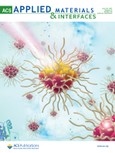
A. Kolokithas-Ntoukas, A. Bakandritsos, J. Belza, P. Kesa, V. Herynek, J. Pankrac, A. Angelopoulou, O. Malina, K. Avgoustakis, V. Georgakilas, K. Polakova and R. Zboril, "Condensed Clustered Iron Oxides for Ultrahigh Photothermal Conversion and In Vivo Multimodal Imaging," ACS APPLIED MATERIALS & INTERFACES, vol. 13, iss. 25, pp. 29247-29256, 2021.
DOI: 10.1021/acsami.1c00908, IF = 9.229
Abstract: Magnetic iron oxide nanocrystals (MIONs) are established as potent theranostic nanoplatforms due to their biocompatibility and the multifunctionality of their spin-active atomic framework. Recent insights have also unveiled their attractive near-infrared photothermal properties, which are, however, limited by their low near-infrared absorbance, resulting in noncompetitive photothermal conversion efficiencies (PCEs). Herein, we report on the dramatically improved photothermal conversion of condensed clustered MIONs, reaching an ultrahigh PCE of 71% at 808 nm, surpassing the so-far MION-based photothermal agents and even benchmark near-infrared photothermal nanomaterials. Moreover, their surface passivation is achieved through a simple self-assembly process, securing high colloidal stability and structural integrity in complex biological media. The bifunctional polymeric canopy simultaneously provided binding sites for anchoring additional cargo, such as a strong near-infrared-absorbing and fluorescent dye, enabling in vivo optical and photoacoustic imaging in deep tissues, while the iron oxide core ensures detection by magnetic resonance imaging. In vitro studies also highlighted a synergy-amplified photothermal effect that significantly reduces the viability of A549 cancer cells upon 808 nm laser irradiation. Integration of such—previously elusive—photophysical properties with simple and cost-effective nanoengineering through self-assembly represents a significant step toward sophisticated nanotheranostics, with great potential in the field of nanomedicine.
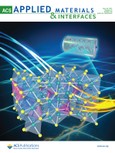
I. Safarik, J. Prochazkova, M. A. Schroer, V. M. Garamus, P. Kopcansky, M. Timko, M. Rajnak, M. Karpets, O. I. Ivankov, M. V. Avdeev, V. I. Petrenko, L. Bulavin and K. Pospiskova, "Cotton Textile/Iron Oxide Nanozyme Composites with Peroxidase-like Activity: Preparation, Characterization, and Application," ACS APPLIED MATERIALS & INTERFACES, vol. 13, iss. 20, pp. 23627-23637, 2021.
DOI: 10.1021/acsami.1c02154, IF = 9.229
Abstract: At present, both native and immobilized nanoparticles are of great importance in many areas of science and technology. In this paper, we have studied magnetic iron oxide nanoparticles and their aggregates bound on woven cotton textiles employing two simple modification procedures. One modification was based on the treatment of textiles with perchloric-acid-stabilized magnetic fluid diluted with methanol followed by drying. The second procedure was based on the microwave-assisted conversion of ferrous sulfate at high pH followed by drying. The structure and functional properties of these modified textiles were analyzed in detail. Scanning electron microscopy of native and modified textiles clearly showed the presence of iron oxide nanoparticles on the surface of the modified cotton fibers. All of the modified textile materials exhibited light to dark brown color depending on the amount of the bound iron oxide particles. Magnetic measurements showed that the saturation magnetization values reflect the amount of magnetic nanoparticles present in the modified textiles. Small-angle X-ray and neutron scattering measurements were conducted for the detailed structural characterization at the nanoscale of both the native and magnetically modified textiles, and different structural organization of nanoparticles in the two kinds of textile samples were concluded. The textile-bound iron oxide particles exhibited peroxidase-like activity when the N,N-diethyl-p-phenylenediamine sulfate salt was used as a substrate; this nanozyme activity enabled rapid decolorization of crystal violet in the presence of hydrogen peroxide. The deposition of a sufficient amount of iron oxide particles on textiles enabled their simple magnetic separation from large volumes of solutions; if necessary, the magnetic response of the modified textiles can be simply increased by incorporation of a piece of magnetic iron wire. The simplicity of the immobilized nanozyme preparation and the low cost of all the precursors enable its widespread application, such as decolorization and degradation of selected organic dyes and other important pollutants. Other types of textile-bound nanozymes can be prepared and used as low-cost catalysts for a variety of applications.

R. Yalavarthi, R. Zbořil, P. Schmuki, A. Naldoni and Š. Kment, "Elucidating the role of surface states of BiVO4 with Mo doping and a CoOOH co-catalyst for photoelectrochemical water splitting," JOURNAL OF POWER SOURCES, vol. 483, pp. 229080, 2020.
DOI: 10.1016/j.jpowsour.2020.229080, IF = 9.127
Abstract: Bismuth vanadate (BiVO4) is a promising material for photoelectrochemical (PEC) water splitting, however, its PEC performance is limited by the high surface and bulk charge recombination rates. Here we present a comprehensive study to elucidate a recombination phenomenon of BiVO4 that arises with Mo doping. The Mo doping produces multiple effects including the formation of MoOx (reduced form of Mo6+) species and oxygen vacancies (VOs) on the surface of the BiVO4 that work in tandem with V4+ species (and MoOx) acting as surface-active intermediates (i-SS) providing improved hole transfer to the electrolyte. In contrast, in the absence of V4+ species, the VOs can act as recombination centers (r-SS). Further, CoOOH co-catalyst coating is used to minimize such recombination centers. Eventually, a photocurrent enhancement of ~37 times (1.1 mA/cm2 at 1.23 V vs. RHE) and a cathodic shift in onset potential of ~500 mV compared to that of pristine BiVO4 (0.03 mA/cm2 at 1.23 V vs. RHE) is obtained. We carried out in-depth PEC analysis using hole scavenger measurements, PEC impedance spectroscopy, and intensity-modulated photocurrent spectroscopy to elucidate the effect of the surface reduction process upon doping, the impact of Vos, MoOx species and CoOOH layer on the enhanced PEC performance.

E. C. Vermisoglou, P. Jakubec, A. Bakandritsos, V. Kupka, M. Pykal, V. Šedajová, J. Vlček, O. Tomanec, M. Scheibe, R. Zbořil, and M. Otyepka, "Graphene with Covalently Grafted Amino Acid as a Route Toward Eco-Friendly and Sustainable Supercapacitors," CHEMSUSCHEM, vol. 14, iss. 8, pp. 3904-3914, 2021.
DOI: 10.1002/cssc.202101039, IF = 8.928
Abstract: Eco-friendly, electrochemically active electrode materials based on covalent graphene derivatives offer enormous potential for energy storage applications. However, covalent grafting of functional groups onto graphene’s surface is challenging due to its low reactivity. We employed fluorographene chemistry to graft an arginine moiety via its guanidine group homogeneously on both sides of graphene. By tuning the reaction conditions and adding a non-toxic, pore-forming agent, we achieved an optimum degree of functionalization and hierarchical porosity in the material. This tripled the specific surface area and yielded a high capacitance value of ~390 F/g at a current density of 0.25 A/g. The applicability of the electrode material was investigated under typical operating conditions by testing an assembled supercapacitor device for up to 30000 charging/discharging cycles, revealing capacitance retention of 82.3%. This work enables the preparation of graphene derivatives with covalently grafted amino acids for technologically important applications, such as supercapacitor-based energy storage.
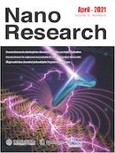
R. Ahmad, G. V. Nutan, D. Singh, G. Gupta, U. Soni, S. Sapra and R. Srivastava, "Colloidal lead-free Cs2AgBiBr6 double perovskite nanocrystals: Synthesis, uniform thin-film fabrication, and application in solution-processed solar cells," NANO RESEARCH, vol. 14, iss. 4, pp. 1126-1134, 2021.
DOI: 10.1007/s12274-020-3161-6, IF = 8.897
Abstract: Recently developed lead-free double perovskite nanocrystals (NCs) have been proposed for the possible application in solution-processed optoelectronic devices. However, the optoelectronic applications of double perovskite NCs have been hampered due to the structural and chemical instability in the presence of polar molecules. Here, we report a facile strategy for the synthesis and purification of Cs2AgBiBr6 double perovskite NCs that remained stable even after washing with polar solvent. This is realized with our efficient colloidal route to synthesize Cs2AgBiBr6 NCs that involve stable and strongly coordinated precursor such as silver-trioctylphosphine complex together with bismuth neodecanoate, which leads to a significantly improved chemical and colloidal stability. Using layer-by-layer solid-state ligand exchange technique, a compact and crack-free thin film of Cs2AgBiBr6 NCs were fabricated. Finally, perovskite solar cells consisting of Cs2AgBiBr6 as an absorber layer were fabricated and tested.
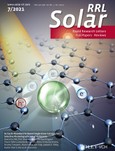
G. Vilé, P. Sharma, M. Nachtegaal, F. Tollini, D. Moscatelli, A. Sroka-Bartnicka, O. Tomanec, M. Petr, J. Filip, I. S. Pieta, R. Zbořil and M. B. Gawande, "An Earth‐Abundant Ni‐Based Single‐Atom Catalyst for Selective Photodegradation of Pollutants," SOLAR RRL, vol. 5, iss. 7, 2021.
DOI: 10.1002/solr.202100176, IF = 8.582
Abstract: Highly efficient catalytic technologies are urgently needed to remove pharmaceutical pollutants from water. In this work, the preparation, characterization, and photocatalytic performance of an earth-abundant Ni-based heterogeneous catalyst featuring highly dispersed Ni species over nanosheets of carbon nitride are reported. The absence of any metallic nickel phase has been confirmed by spectrometric analyses, unveiling the NiN environment for the metal centers and attaining synergistic interfacial carrier transfer via N-Ni-N coordination. By combining advanced characterizations with kinetic investigations, it is demonstrated that these newly formed isolated single atoms of Ni act as a bridge, facilitating faster electron transfer, increasing the charge density on Ni, and reducing the photocarrier transfer barrier. Compared to literature precedents, this substantially enhances the degradation of gemfibrozil, a model pharmaceutical pollutant found in wastewater, reducing the formation of toxic benzenic byproducts during photooxidation. This effect, which is not observed over conventional nanoparticle-based materials, discriminates the role of single-atom and nanoparticle-based catalysis during degradation of pollutants. This work opens new avenues in designing selective and earth-abundant photocatalysts for advanced oxidation processes, showing the importance of atom coordination to control the surface and catalytic properties of single-atom materials.
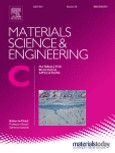
M. Nikolaou, K. Avraam, A. Kolokithas-Ntoukas, A. Bakandritsos, F. Lizal, O. Misik, M. Maly, J. Jedelsky, I. Savva, F. Balanean and T. Krasia-Christoforou, "Superparamagnetic electrospun microrods for magnetically-guided pulmonary drug delivery with magnetic heating," MATERIALS SCIENCE AND ENGINEERING: C, vol. 126, art.no. 112117, 2021.
DOI: 10.1016/j.msec.2021.112117, IF = 7.328
Abstract: Controlled pulmonary drug delivery systems employing non-spherical particles as drug carriers attract considerable attention nowadays. Such anisotropic morphologies may travel deeper into the lung airways, thus enabling the efficient accumulation of therapeutic compounds at the point of interest and subsequently their sustained release. This study focuses on the fabrication of electrospun superparamagnetic polymer-based biodegradable microrods consisting of poly(l-lactide) (PLLA), polyethylene oxide (PEO) and oleic acid-coated magnetite nanoparticles (OA·Fe3O4). The production of magnetite-free (0% wt. OA·Fe3O4) and magnetite-loaded (50% and 70% wt. Fe3O4) microrods was realized upon subjecting the as-prepared electrospun fibers to UV irradiation, followed by sonication. Moreover, drug-loaded microrods were fabricated incorporating methyl 4-hydroxybenzoate (MHB) as a model pharmaceutical compound and the drug release profile from both, the drug-loaded membranes and the corresponding microrods was investigated in aqueous media. In addition, the magnetic properties of the produced materials were exploited for remote induction of hyperthermia under AC magnetic field, while the possibility to reduce transport losses and enhance the targeted delivery to lower airways by manipulation of the airborne microrods by DC magnetic field was also demonstrated.
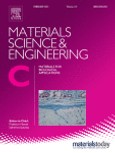
A. Jastrzębska, B. Scheibe, A. Szuplewska, A. Rozmysłowska-Wojciechowska, M. Chudy, C. Aparicio, M. Scheibe, I. Janica, A. Ciesielski, M. Otyepka and M. Barsoum, "On the rapid in situ oxidation of two-dimensional V2CTz MXene in culture cell media and their cytotoxicity," MATERIALS SCIENCE AND ENGINEERING: C, vol. 119, pp. 111431, 2020.
DOI: 10.1016/j.msec.2020.111431, IF = 7.328
Abstract: The plethora of emerging two-dimensional (2D) materials exhibit wide potential application in novel technologies and advanced devices. However, their stability in environmental conditions could be an issue, affecting their application possibilities and posing health risks. Moreover, their decomposed leftovers can also induce a negative influence on human health. In particular, transition metal carbides commonly referred to as MXenes are susceptible to environmental oxidation being decomposed toward transition metal oxides and carbide-derived carbon. In this study we focused on the oxidation-state-related in vitro cytotoxicity of delaminated V2CTz onto immortalized keratinocytes (HaCaT) and malignant melanoma (A375) human cell lines. Due to the fact, that the V2CTx MXenes are least stable from all known obtained MXenes up to date, the vanadium ones were a practical choice to visualize the oxidation-cytotoxic correlation keeping the standards of 24–48 h of cell culturing. We found that the oxidation of V2CTz highly increases their cytotoxicity toward human cells, which is also time and dose dependent. The identified mode of action relates to the cell cycle as well as cellular membrane disintegration through direct physicochemical interactions.
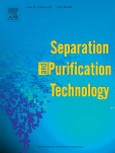
D. Silvestri, S. Wacławek, B. Sobel, R. Torres–Mendieta, M. Pawlyta, V. V. Padil, J. Filip and M. Černík, "Modification of nZVI with a bio-conjugate containing amine and carbonyl functional groups for catalytic activation of persulfate," SEPARATION AND PURIFICATION TECHNOLOGY, vol. 257, pp. 117880, 2020.
DOI: 10.1016/j.seppur.2020.117880, IF = 7.312
Abstract: Although the catalytic activation of persulfate by iron is now common in environmental sciences, there are still several obstacles, including the non-selectiveness and high cost of the production of the iron catalyst. Therefore, it is essential to develop fast and easy methods for producing an iron catalyst that exhibits high surface area properties and rapid catalytic activation of persulfate. In the present work, a chitosan-poly(3–hydroxybutyrate) conjugate (CS-PHB) was used to improve the synthesis of nanoscale zero-valent iron (nZVI). CS-PHB possesses among others two functional groups (carbonyl and amine) that are desirable for catalytic applications, including heterogeneous persulfate activation. The produced CS-PHB-nZVI particles showed an extensive surface area (113 m2/g) and, at the same time, superior activity in heterogeneous catalysis, which was tested and compared with others persulfate activation methods (heat, Fe2+, commercial nZVI). The most suitable activation conditions for complete degradation of 0.15 mM of the model pollutant (methyl orange; MO) were determined (i.e., a pH of 7, persulfate and CS-PHB-nZVI concentrations of 2 mM and 50 mg/L, respectively). The role of temperature in MO oxidation was evaluated by the Arrhenius equation, and the results showed that the estimated activation energy (Ea) was 27.1 kJ/mol. The MO degradation may be attributed to the generation of SO4radical dot− in the system as a result of scavenging tests. A magnet can be used to easily separate the remaining catalyst. It is believed that due to it having several advantages over traditionally used nZVI, CS-PHB-nZVI may be successfully applied for catalytic remediation of contaminants that are reactive towards sulfate radicals.
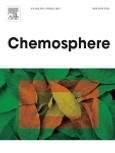
J. Semerád, A. Ševců, N. H. Nguyen, P. Hrabák, R. Špánek, K. Bobčíková, K. Pospíšková, J. Filip, I. Medřík, J. Kašlík, I. Šafařík, A. Filipová, J. Nosek, M. Pivokonský and T. Cajthaml, "Discovering the potential of an nZVI-biochar composite as a material for the nanobioremediation of chlorinated solvents in groundwater: Degradation efficiency and effect on resident microorganisms," CHEMOSPHERE, vol. 281, art. no. 130915, 2021.
DOI: 10.1016/j.chemosphere.2021.130915, IF = 7.086
Abstract: Abiotic and biotic remediation of chlorinated ethenes (CEs) in groundwater from a real contaminated site was studied using biochar-based composites containing nanoscale zero-valent iron (nZVI/BC) and natural resident microbes/specific CE degraders supported by a whey addition. The material represented by the biochar matrix decorated by isolated iron nanoparticles or their aggregates, along with the added whey, was capable of a stepwise dechlorination of CEs. The tested materials (nZVI/BC and BC) were able to decrease the original TCE concentration by 99% in 30 days. Nevertheless, regarding the transformation products, it was clear that biotic as well as abiotic transformation mechanisms were involved in the transformation process when nonchlorinated volatiles (i.e., methane, ethane, ethene, and acetylene) were detected after the application of nZVI/BC and nZVI/BC with whey. The whey addition caused a massive increase in bacterial biomass in the groundwater samples (monitored by 16S rRNA sequencing and qPCR) that corresponded with the transformation of trichloro- and dichloro-CEs, and this process was accompanied by the formation of less chlorinated products. Moreover, the biostimulation step also eliminated the adverse effect caused by nZVI/BC (decrease in microbial biomass after nZVI/BC addition). The nZVI/BC material or its aging products, and probably together with vinyl chloride-respiring bacteria, were able to continue the further reductive dechlorination of dichlorinated CEs into nonhalogenated volatiles. Overall, the results of the present study demonstrate the potential, feasibility, and environmental safety of this nanobioremediation approach.
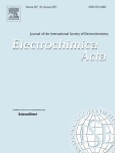
J. Y. Cheong, A. Venkateshaiah, T. G. Yun, S. Shin, M. Černík, V. V. Padil, I. Kim and R. S. Varma, "Transforming gum wastes into high tap density micron-sized carbon with ultra-stable high-rate Li storage," ELECTROCHIMICA ACTA, vol. 367, pp. 137419, 2021.
DOI: 10.1016/j.electacta.2020.137419, IF = 6.901
Abstract: Among various natural wastes, gum wastes pose major issues, as they are unusable and hard to be disposed due to their acidic and sticky nature. Herein, a rational synthetic strategy is employed to transform various kinds of gum wastes into micron-sized carbon, which also exhibit high tap density (1.4–1.7 g cm−3) desirable for practical application in lithium-ion batteries (LIBs). Gum karaya (GK) micron-size functional carbon (GKMFC) exhibits the most outstanding electrochemical performance, with a volumetric capacity of 175.4 mAh cm−3 at a current density of 3000 mA g−1 for 5000 cycles, and possesses ultra-stable high-rate cyclability (a capacity decay of only 0.001881% per cycle). Additional electrochemical analyses reveal that GKMFC exhibits stable structural integrity as well as minimal cell resistance even after cycling, showing its practical application as viable electrode for LIBs. This work sheds light on utilizing high tap density carbon from gum wastes for LIBs, which can also be applicable to other natural wastes and carbon.
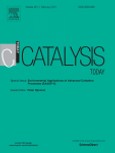
R. Yalavarthi, A. Naldoni, R. Zbořil and Š. Kment, "Controlling phase fraction and crystal orientation via thermal oxidation of iron foils for enhanced photoelectrochemical performance," CATALYSIS TODAY, vol. 361, pp. 117-123, 2020.
DOI: 10.1016/j.cattod.2020.01.044, IF = 6.766
Abstract: It has been known that the intrinsic properties of a semiconducting photoanodes significantly influence the overall photoelectrochemical (PEC) performance. Here, we report on the fabrication of layered structure of mixed-phase FeO (wustite), Fe3O4 (magnetite), and α-Fe2O3 (hematite) iron oxide nanoflake/nanowire morphologies through the thermal oxidation of pristine Fe foils, and the role of metastable FeO phase on the PEC performance discussed. X-ray diffraction and Raman spectroscopic measurements revealed the variation in phase fraction of wustite, magnetite, and hematite with respect to oxidation temperature. The PEC measurements indicate a dependence of onset potential and photocurrent density on phase proportion. The sample, which contains metastable wustite phase FeO, along with Fe3O4 and α-Fe2O3, shows a lower onset and higher photocurrent density, followed by the sample that contains a nearly equal ratio of magnetite to hematite phase (∼ 42:58) than that of relatively higher magnetite phase content samples. It is attributed to the improvement in the intrinsic transport of photogenerated charge carriers from hematite via the magnetite and wustite phases to the back contact of the photoanode. It consequently led to a decrease in bulk charge recombination across the interfaces of multiple phases. We carried out electrochemical impedance (EIS) and light intensity-modulated photocurrent measurements (IMPS) to elucidate the mechanism behind the charge separation across the multiple phases.
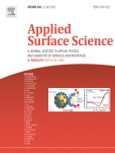
L. Mascaretti, T. Barman, B. R. Bricchi, F. Münz, A. Li Bassi, Š. Kment and A. Naldoni, "Controlling the plasmonic properties of titanium nitride thin films by radiofrequency substrate biasing in magnetron sputtering," APPLIED SURFACE SCIENCE, vol. 554, art. no. 149543, 2021.
DOI: 10.1016/j.apsusc.2021.149543, IF = 6.707
Abstract: Titanium nitride (TiN) is a promising plasmonic material alternative to gold and silver thanks to its refractory character, low resistivity (<100 µΩ cm) and compatibility with microelectronic industry processes. Extensive research is currently focusing on the development of magnetron sputtering as a large-scale technique to produce TiN thin films with low resistivity and optimized plasmonic performance. As such, more knowledge on the correlation between process parameters and the functional properties of TiN is needed. Here we report the effect of radiofrequency (RF) substrate biasing during the sputtering process on the structural, optical and electrical properties of TiN films. We employ spectroscopic ellipsometry as a sensible characterization method and we show that a moderate RF power, despite reducing the grain size, allows to achieve optimal plasmonic quality factors and a low resistivity (<100 µΩ cm). This is attributed to the introduction of a slight under-stoichiometry in the material (i.e., TiN0.85), as opposite to the films synthesized without bias or under intense bombardment conditions. RF substrate biasing during magnetron sputtering appears thus as a viable tool to prepare TiN thin films at room temperature with desired plasmonic properties.
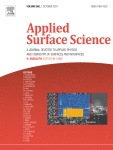
V. Prysiazhnyi, J. Kratochvil, D. Kaftan, R. Ctvrtlik and V. Stranak, "Growth of hard nanostructured ZrN surface induced by copper nanoparticles," APPLIED SURFACE SCIENCE, vol. 562, art. no. 150230, 2021.
DOI: 10.1016/j.apsusc.2021.150230, IF = 6.707
Abstract: Surfaces with defined nanoroughness and topography are appreciated in many applications. However, such surfaces, often built from deposited nanoparticles, suffer from low hardness and overall mechanical stability. This paper reports the research of ZrN surfaces with defined nanoroughness attained by seed-like growth evoked by Cu nanoparticles. The two-step process consists of (i) deposition of Cu nanoparticles by gas aggregation forming seeds (ii) growth of ZrN with surface nanoarchitecture. Our study faces the challenge to stabilize soft Cu nanoparticles by coating them with a hard, crystalline ZrN film deposited by High Power Impulse Magnetron Sputtering (HiPIMS) without any post thermal annealing which can be useful for coating heat-sensitive substrates. It is shown that by tailoring the HiPIMS process we were able to deposit hard Cu/ZrN nanocomposite with roughness and morphology predetermined by the Cu nanoparticles. Nano-indentation carried out with a resolution below 1 nm, confirmed sufficient nanohardness of CuNPs/ZrN nanocomposite.
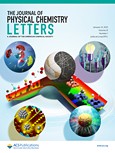
A. Sánchez-Grande, J. I. Urgel, L. Veis, S. Edalatmanesh, J. Santos, K. Lauwaet, P. Mutombo, J. M. Gallego, J. Brabec, P. Beran, D. Nachtigallová, R. Miranda, N. Martín, P. Jelínek and D. Écija, "Unravelling the Open-Shell Character of Peripentacene on Au(111)," THE JOURNAL OF PHYSICAL CHEMISTRY LETTERS, vol. 12, iss. 1, pp. 330-336, 2021.
DOI: 10.1021/acs.jpclett.0c02518, IF = 6.475
Abstract: Polycyclic aromatic hydrocarbons (PAHs) are a family of organic compounds comprising two or more fused aromatic rings which feature manifold applications in modern technology. Among these species, those presenting an open-shell magnetic ground state are of particular interest for organic electronic, spintronic, and non-linear optics and energy storage devices. Within PAHs, special attention has been devoted in recent years to the synthesis and study of the acene and fused acene (periacene) families, steered by their decreasing HOMO–LUMO gap with length and predicted open-shell character above some size. However, an experimental fingerprint of such magnetic ground state has remained elusive. Here, we report on the in-depth electronic characterization of isolated peripentacene molecules on a Au(111) surface. Scanning tunnelling spectroscopy, complemented by computational investigations, reveals an antiferromagnetic singlet ground state, characterized by singlet–triplet inelastic excitations with an experimental effective exchange coupling (Jeff) of 40.5 meV. Our results deepen the fundamental understanding of organic compounds with magnetic ground states, featuring perspectives in carbon-based spintronic devices.

N. Kaur, A. Khunger, S. L. Wallen, A. Kaushik, G. R. Chaudhary and R. S. Varma, "Advanced green analytical chemistry for environmental pesticide detection," CURRENT OPINION IN GREEN AND SUSTAINABLE CHEMISTRY, vol. 30, art. no. 100488, 2021.
DOI: 10.1016/j.cogsc.2021.100488, IF = 6.457
Abstract: By understanding the adverse effects of pesticide residues on human and aquatic health, the 21st century has awareness to the importance of adopting advanced agriculture based on minimum use of pesticide residues. Such advancements advocate the development of novel and sensitive analytical methods, which can detect ultra-low levels of pesticide residues with minimum complexity and requirement of expensive traditional analytical techniques. The objective of the present work is to bring forth the concept of green analytical chemistry and to assess the recent progress in pesticide detection techniques within the framework of green chemistry and sustainability. Herein, recent advances are outlined in analytical techniques based on nanosystems for convenient, fast, green, and ultrasensitive detection of pesticide residues in food and environmental samples, including deliberations on newer and future cost-effective, analytical approaches in the field of pesticide detection.
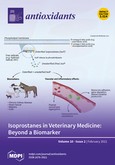
A. Cerulli, A. Napolitano, J. Hošek, M. Masullo, C. Pizza and S. Piacente, "Antioxidant and In Vitro Preliminary Anti-Inflammatory Activity of Castanea sativa (Italian Cultivar “Marrone di Roccadaspide” PGI) Burs, Leaves, and Chestnuts Extracts and Their Metabolite Profiles by LC-ESI/LTQOrbitrap/MS/MS," ANTIOXIDANTS, vol. 10, iss. 2, pp. 278, 2021.
DOI: 10.3390/antiox10020278, IF = 6.312
Abstract: The Italian “Marrone di Roccadaspide” (Castanea sativa), a labeled Protected Geographical Indication (PGI) product, represents an important economic resource for the Italian market. With the aim to give an interesting opportunity to use chestnuts by-products for the development of nutraceutical and/or cosmetic formulations, the investigation of burs and leaves along with chestnuts of C. sativa, cultivar “Marrone di Roccadaspide”, has been performed. The phenolic, tannin, and flavonoid content of the MeOH extracts of “Marrone di Roccadaspide” burs, leaves, and chestnuts as well as their antioxidant activity by spectrophotometric methods (1,1-diphenyl-2-picrylhydrazyl (DPPH), Trolox Equivalent Antioxidant Capacity (TEAC), and Ferric Reducing Antioxidant Power (FRAP) have been evaluated. Furthermore, a cell-based antioxidant in vitro test along with in vitro assays for the evaluation of the ability to reduce nuclear factor-kappa B (NF-κB) activation and nitric oxide (NO) production have been carried out. In order to identify the secondary metabolites responsible for the high phenolic content and the strong antioxidant activity shown by leaves and burs extracts, and to highlight the differences between their chemical composition, the analysis of the metabolite profile of the MeOH extracts obtained from both by-products and chestnuts by liquid chromatography coupled to electrospray ionization and multiple-stage linear ion-trap and Orbitrap high-resolution mass spectrometry (LC-(-)ESI/LTQOrbitrap/MS/MS) has been performed. LC-MS analysis allowed the identification of different classes of specialized metabolites including hydrolyzable tannins, flavonoids, ellagic acid and phenol glucoside derivatives, and triterpenoids as well as polar lipids. Our results show how the antioxidant activity of the extracts can be correlated to their high tannins and flavonoids content while polar lipids occurring in the MeOH extract of the leaves could contribute to determining its higher anti-inflammatory activity.
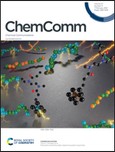
P. Sarkar, A. Sarmah and C. Mukherjee, "Synthesis, crystallographic and spectroscopic characterization, and theoretical elucidation of an elusive aminyl radical containing a CuII–aminyl-iminosemiquinone complex," CHEMICAL COMMUNICATIONS, vol. 57, iss. 11, pp. 1352-1355, 2021.
DOI: 10.1039/d0cc07378d, IF = 6.222
Abstract: An elusive aminyl radical and an iminosemiquinone radical-coordinated square pyramidal Cu(II) complex (1) have been isolated by the reaction between the noninnocent ligand H4LPy(AP) and Cu(ClO4)2·6H2O in the presence of Et3N and air as the sole oxidant. The geometry and electronic structure of the complex were concluded by X-ray crystallography, magnetic and EPR measurements, and density functional theory (DFT) calculations. This work reports the first crystallographic example of the two different types of radicals co-existing in a stable complex.
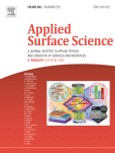
E. Otyepková, K. Skladanová, M. Pykal, B. Blahová Prudilová, J. Kašlík, K. Čépe, P. Banáš, P. Lazar and M. Otyepka, "Molecular insights from theoretical calculations explain the differences in affinity and diffusion of airborne contaminants on surfaces of hBN and graphene," APPLIED SURFACE SCIENCE, vol. 565, pp. 150382, 2021.
DOI: 10.1016/j.apsusc.2021.150382, IF = 6.128
Abstract: Exposed surfaces of two-dimensional (2D) materials are susceptible to the adsorption of various molecules including airborne contaminants, which can affect their performance in real applications. Hexagonal boron nitride (hBN) is structurally the closest relative to graphite and its single layer form to graphene. The adsorption of organic molecules to graphene was subject of extensive research, however, little is known about interaction of adsorbates to hBN surface. We studied the affinity of organic molecules to the surface of hBN by inverse gas chromatography. The adsorption enthalpies of polar molecules including acetonitrile, nitromethane, ethanol, and acetone exhibited strong coverage dependency up to 20 % of a monolayer. Density functional theory and molecular dynamics calculations were employed to understand and interpret experimentally measured adsorption enthalpies. The calculations revealed that the strong affinity of polar molecules at low coverage was due to adsorption on steps and edges of hBN. The calculated surface diffusion barriers of all molecules were rather low, i.e., below 0.5 kcal/mol (except for benzene and cyclohexane), and molecules adsorbed on the surface behaved like a 2D gas. The results demonstrated that coupling inverse gas chromatography with computer simulations can provide vital insights into the mechanism of adsorption at the molecular level.
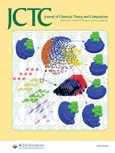
P. Stadlbauer, B. Islam, M. Otyepka, J. Chen, D. Monchaud, J. Zhou, J. Mergny and J. Šponer, "Insights into G-Quadruplex–Hemin Dynamics Using Atomistic Simulations: Implications for Reactivity and Folding," JOURNAL OF CHEMICAL THEORY AND COMPUTATION, vol. 17, iss. 3, pp. 1883-1899, 2021.
DOI: 10.1021/acs.jctc.0c01176, IF = 6.006
Abstract: Guanine quadruplex nucleic acids (G4s) are involved in key biological processes such as replication or transcription. Beyond their biological relevance, G4s find applications as biotechnological tools since they readily bind hemin and enhance its peroxidase activity, creating a G4-DNAzyme. The biocatalytic properties of G4-DNAzymes have been thoroughly studied and used for biosensing purposes. Despite hundreds of applications and massive experimental efforts, the atomistic details of the reaction mechanism remain unclear. To help select between the different hypotheses currently under investigation, we use extended explicit-solvent molecular dynamics (MD) simulations to scrutinize the G4/hemin interaction. We find that besides the dominant conformation in which hemin is stacked atop the external G-quartets, hemin can also transiently bind to the loops and be brought to the external G-quartets through diverse delivery mechanisms. The simulations do not support the catalytic mechanism relying on a wobbling guanine. Similarly, the catalytic role of the iron-bound water molecule is not in line with our results; however, given the simulation limitations, this observation should be considered with some caution. The simulations rather suggest tentative mechanisms in which the external G-quartet itself could be responsible for the unique H2O2-promoted biocatalytic properties of the G4/hemin complexes. Once stacked atop a terminal G-quartet, hemin rotates about its vertical axis while readily sampling shifted geometries where the iron transiently contacts oxygen atoms of the adjacent G-quartet. This dynamics is not apparent from the ensemble-averaged structure. We also visualize transient interactions between the stacked hemin and the G4 loops. Finally, we investigated interactions between hemin and on-pathway folding intermediates of the parallel-stranded G4 fold. The simulations suggest that hemin drives the folding of parallel-stranded G4s from slip-stranded intermediates, acting as a G4 chaperone. Limitations of the MD technique are briefly discussed.
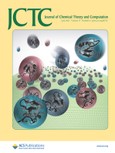
M. Janeček, P. Kührová, V. Mlýnský, M. Otyepka, J. Šponer and P. Banáš, "W-RESP: Well-Restrained Electrostatic Potential-Derived Charges. Revisiting the Charge Derivation Model," JOURNAL OF CHEMICAL THEORY AND COMPUTATION, vol. 17, iss. 6, pp. 3495–3509, 2021.
DOI: 10.1021/acs.jctc.0c00976, IF = 6.006
Abstract: Representation of electrostatic interactions by a Coulombic pairwise potential between atom-centered partial charges is a fundamental and crucial part of empirical force fields used in classical molecular dynamics simulations. The broad success of the AMBER force-field family originates mainly from the restrained electrostatic potential (RESP) charge model, which derives partial charges to reproduce the electrostatic field around the molecules. However, the description of the electrostatic potential around molecules by standard RESP may be biased for some types of molecules. In this study, we modified the RESP charge derivation model to improve its description of the electrostatic potential around molecules and thus electrostatic interactions in the force field. In particular, we reoptimized the atomic radii for definition of the grid points around the molecule, redesigned the restraining scheme, and included extra point (EP) charges. The RESP fitting was significantly improved for aromatic heterocyclic molecules. Thus, the suggested W-RESP(-EP) charge derivation model shows some potential for improving the performance of the nucleic acid force fields, for which the poor description of nonbonded interactions, such as the underestimated stability of base pairing, is well-established. We also report some preliminary simulation tests (around 1 ms of simulation data) on A-RNA duplexes, tetranucleotides, and tetraloops. The simulations reveal no adverse effects, while the description of base-pairing interactions might be improved. The new charges can thus be used in future attempts to improve the nucleic acid simulation force fields, in combination with reparametrization of the other terms.
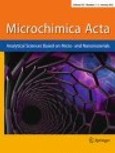
J. Belza, A. Opletalová and K. Poláková, "Carbon dots for virus detection and therapy," MICROCHIMICA ACTA, vol. 188, iss. 12, pp. 430, 2021.
DOI: 10.1007/s00604-021-05076-6, IF = 5.833
Abstract: Recent experience with the COVID-19 pandemic should be a lesson learnt with respect to the effort we have to invest in the development of new strategies for the treatment of viral diseases, along with their cheap, easy, sensitive, and selective detection. Since we live in a globalized world where just hours can play a crucial role in the spread of a virus, its detection must be as quick as possible. Thanks to their chemical stability, photostability, and superior biocompatibility, carbon dots are a kind of nanomaterial showing great potential in both the detection of various virus strains and a broad-spectrum antiviral therapy. The biosensing and antiviral properties of carbon dots can be tuned by the selection of synthesis precursors as well as by easy post-synthetic functionalization. In this review, we will first summarize current options of virus detection utilizing carbon dots by either electrochemical or optical biosensing approaches. Secondly, we will cover and share the up-to-date knowledge of carbon dots’ antiviral properties, which showed promising activity against various types of viruses including SARS-CoV-2. The mechanisms of their antiviral actions will be further adressed as well. Finally, we will discuss the advantages and distadvantages of the use of carbon dots in the tangled battle against viral infections in order to provide valuable informations for further research and development of new virus biosensors and antiviral therapeutics.
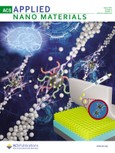
G. Niraula, J. A. H. Coaquira, G. Zoppellaro, B. M. G. Villar, F. Garcia, A. F. Bakuzis, J. P. F. Longo, M. C. Rodrigues, D. Muraca, A. I. Ayesh, F. S. M. Sinfrônio, A. S. de Menezes, G. F. Goya and S. K. Sharma, "Engineering Shape Anisotropy of Fe3O4-γ-Fe2O3 Hollow Nanoparticles for Magnetic Hyperthermia," ACS APPLIED NANO MATERIALS, vol. 4, iss. 3, pp. 3148-3158, 2021.
DOI: 10.1021/acsanm.1c00311, IF = 5.097
Abstract: The use of microwave-assisted synthesis (in water) of α-Fe2O3 nanomaterials followed by their transformation onto iron oxide Fe3O4-γ-Fe2O3 hollow nanoparticles encoding well-defined sizes and shapes [nanorings (NRs) and nanotubes (NTs)] is henceforth described. The impact of experimental variables such as concentration of reactants, volume of solvent employed, and reaction times/temperatures during the shape-controlled synthesis revealed that the key factor that gated generation of morphologically diverse nanoparticles was associated to the initial concentration of phosphate anions employed in the reactant mixture. All the nanomaterials presented were fully characterized by powder X-ray diffraction, field emission scanning electron microscopy, Fourier transform infrared, Mössbauer spectroscopy, and superconducting quantum interference device (SQUID). The hollow nanoparticles that expressed the most promising magnetic responses, NTs and NRs, were further tested in terms of efficiencies in controlling the magnetic hyperthermia, in view of their possible use for biomedical applications, supported by their excellent viability as screened by in vitro cytotoxicity tests. These systems NTs and NRs expressed very good magneto-hyperthermia properties, results that were further validated by micromagnetic simulations. The observed specific absorption rate (SAR) and intrinsic loss power of the NRs and NTs peaked the values of 340 W/g and 2.45 nH m2 kg–1 (NRs) and 465 W/g and 3.3 nH m2 kg–1 (NTs), respectively, at the maximum clinical field 450 Oe and under a frequency of 107 kHz and are the highest values among those reported so far in the hollow iron-oxide family. The higher SAR in NTs accounts the importance of magnetic shape anisotropy, which is well-predicted by the modified dynamic hysteresis (β-MDH) theoretical model.

G. Niraula, J. A. H. Coaquira, G. Zoppellaro, B. M. G. Villar, F. Garcia, A. F. Bakuzis, J. P. F. Longo, M. C. Rodrigues, D. Muraca, A. I. Ayesh, F. S. M. Sinfrônio, A. S. de Menezes, G. F. Goya and S. K. Sharma, "Engineering Shape Anisotropy of Fe3O4-γ-Fe2O3 Hollow Nanoparticles for Magnetic Hyperthermia," ACS APPLIED NANO MATERIALS, vol. 4, iss. 3, pp. 3148-3158, 2021.
DOI: 10.1021/acsanm.1c00311, IF = 5.097
Abstract: The use of microwave-assisted synthesis (in water) of α-Fe2O3 nanomaterials followed by their transformation onto iron oxide Fe3O4-γ-Fe2O3 hollow nanoparticles encoding well-defined sizes and shapes [nanorings (NRs) and nanotubes (NTs)] is henceforth described. The impact of experimental variables such as concentration of reactants, volume of solvent employed, and reaction times/temperatures during the shape-controlled synthesis revealed that the key factor that gated generation of morphologically diverse nanoparticles was associated to the initial concentration of phosphate anions employed in the reactant mixture. All the nanomaterials presented were fully characterized by powder X-ray diffraction, field emission scanning electron microscopy, Fourier transform infrared, Mössbauer spectroscopy, and superconducting quantum interference device (SQUID). The hollow nanoparticles that expressed the most promising magnetic responses, NTs and NRs, were further tested in terms of efficiencies in controlling the magnetic hyperthermia, in view of their possible use for biomedical applications, supported by their excellent viability as screened by in vitro cytotoxicity tests. These systems NTs and NRs expressed very good magneto-hyperthermia properties, results that were further validated by micromagnetic simulations. The observed specific absorption rate (SAR) and intrinsic loss power of the NRs and NTs peaked the values of 340 W/g and 2.45 nH m2 kg–1 (NRs) and 465 W/g and 3.3 nH m2 kg–1 (NTs), respectively, at the maximum clinical field 450 Oe and under a frequency of 107 kHz and are the highest values among those reported so far in the hollow iron-oxide family. The higher SAR in NTs accounts the importance of magnetic shape anisotropy, which is well-predicted by the modified dynamic hysteresis (β-MDH) theoretical model.
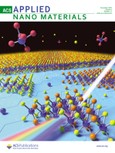
R. Afshari, O. Akhavan, M. R. Hamblin and R. S. Varma, "Review of Oxygenation with Nanobubbles: Possible Treatment for Hypoxic COVID-19 Patients," ACS APPLIED NANO MATERIALS, vol. 4, iss. 11, pp. 11386-11412, 2021.
DOI: 10.1021/acsanm.1c01907, IF = 5.097
Abstract: The coronavirus disease (COVID-19) pandemic, which has spread around the world, caused the death of many affected patients, partly because of the lack of oxygen arising from impaired respiration or blood circulation. Thus, maintaining an appropriate level of oxygen in the patients’ blood by devising alternatives to ventilator systems is a top priority goal for clinicians. The present review highlights the ever-increasing application of nanobubbles (NBs), miniature gaseous vesicles, for the oxygenation of hypoxic patients. Oxygen-containing NBs can exert a range of beneficial physiologic and pharmacologic effects that include tissue oxygenation, as well as tissue repair mechanisms, antiinflammatory properties, and antibacterial activity. In this review, we provide a comprehensive survey of the application of oxygen-containing NBs, with a primary focus on the development of intravenous platforms. The multimodal functions of oxygen-carrying NBs, including antimicrobial, antiinflammatory, drug carrying, and the promotion of wound healing are discussed, including the benefits and challenges of using NBs as a treatment for patients with acute hypoxemic respiratory failure, particularly due to COVID-19.
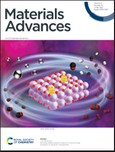
S. Iravani and R. S. Varma, "MXenes and MXene-based materials for tissue engineering and regenerative medicine: recent advances," MATERIALS ADVANCES, vol. 2, iss. 9, pp. 2906-2917, 2021.
DOI: 10.1039/d1ma00189b, IF = N/A
Abstract: In view of their unique planar structure and outstanding physical and chemical properties, two-dimensional (2D) materials have garnered the attention of interdisciplinary researchers in the domain of biomedical and clinical applications. MXenes are 2D transition metal carbides and nitrides with outstanding characteristics, comprising huge surface area, biocompatibility, low toxicity, significant electrical conductivity, antibacterial activity and hydrophilicity. Although numerous investigations have demonstrated the promising potential of MXenes for different biomedical applications that include biosensing, bioimaging, cancer therapy, tissue engineering, regenerative medicine, and drug delivery, there are still important challenging issues pertaining to their stability in physiological environments, sustained/controlled release of drugs, and biodegradability. The well-designed ultra-thin MXene nanosheets are deployable as promising biocompatible inorganic nanoplatforms for assorted biomedical applications via the clinical translation of nanomedicine; MXenes are good candidates for tissue engineering and regenerative medicine. Herein, recent progresses on 2D MXenes for state-of-the-art tissue engineering and regenerative medicine are discussed with emphasis on the significant challenges and future perspectives.


